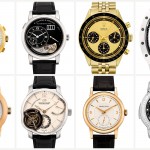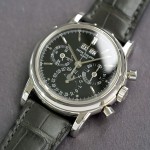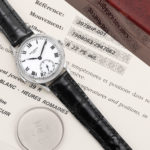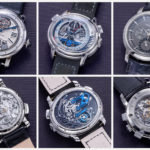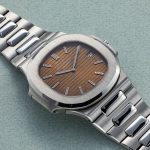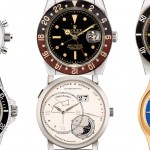Highlights: Contemporary Complications at Phillips’ Hong Kong Auction
With a good dose of Lange and maybe one "hype" watch.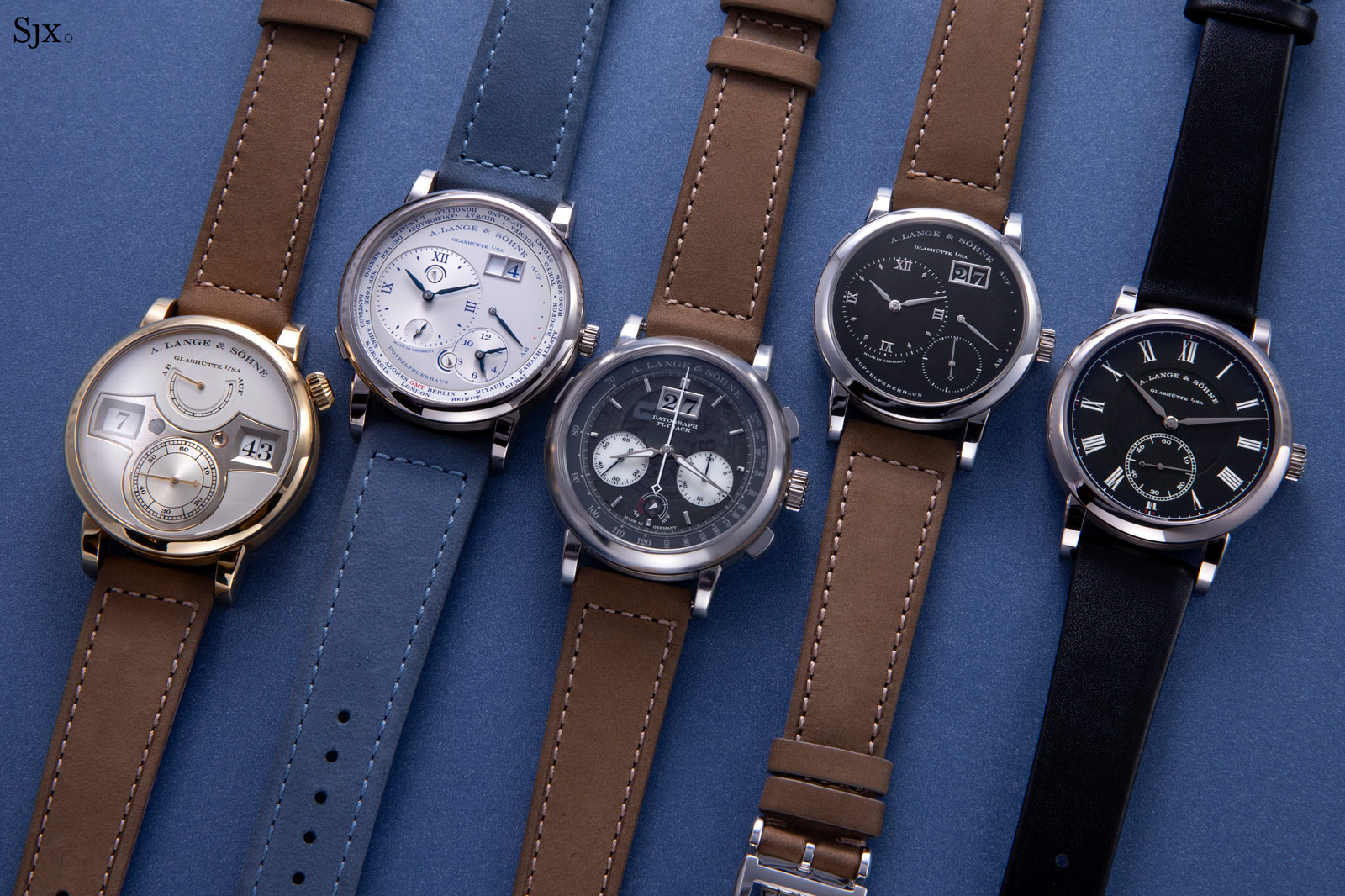
Complicated watches naturally come at a high cost of entry compared with simpler watches, at least at retail. But on the secondary market they can offer compelling value – except for a handful of “hot” watches (and we included one of those in the list too).
At the same time, complications are intrinsically appealing because they possess the sheer technical quality that’s a key quality of high-end watchmaking. And there A. Lange & Söhne is no doubt a standout, especially for its watches that are considered benchmarks in their category, like the Datograph and Zeitwerk.
So we round up a few highlights amongst the complications at Phillips’ upcoming Hong Kong auction, covering a few value buys and also some star picks by Lange. So the list is diverse, ranging from the ultra-desirable Lange Datograph Lumen to a Piaget tourbillon with a form movement that is technically interesting and definitely strong value.
The Hong Kong Watch Auction: XIII takes place on November 25 (for lots 801-852) and November 26 (lots 853-1106). The full catalogue and registration for bidding are available on Phillips.com.
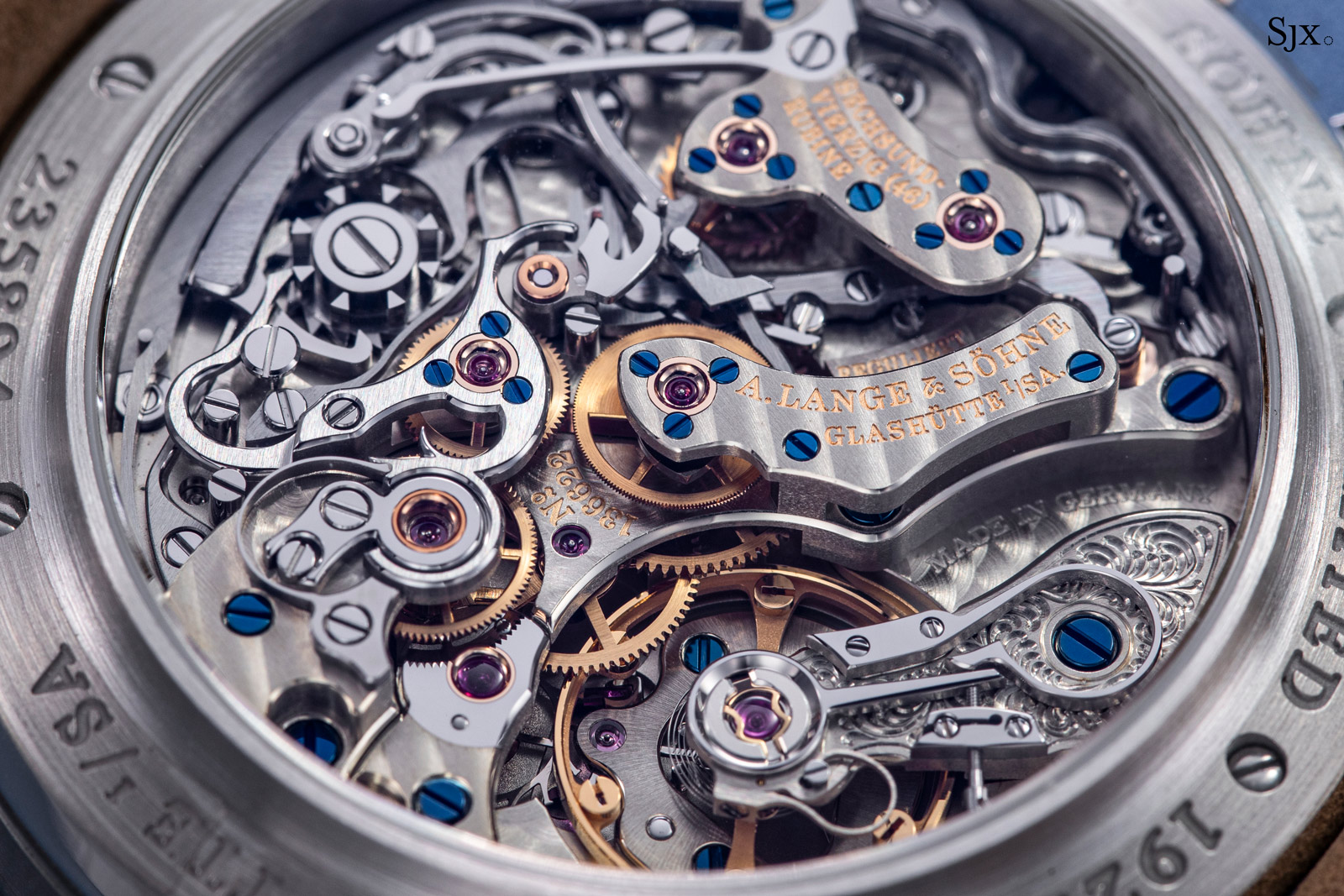
The movement in the Datograph Lumen
Lot 833: A. Lange & Söhne Datograph Lumen
One of Lange’s trademark complications is the chronograph, simply because it does chronographs so well. It all started in 1999 with the Datograph. It’s still considered a landmark in modern chronographs two decades later for its fine, traditional construction.
The model has been offered in several variations over its history, including several limited editions. But the Lumen is perhaps the most intriguing with its see-through sapphire dial, luminous registers, and date discs coated in Super-Luminova. That has made the Datograph Lumen something of a “hype” watch, resulting in it selling for far over its original retail price.
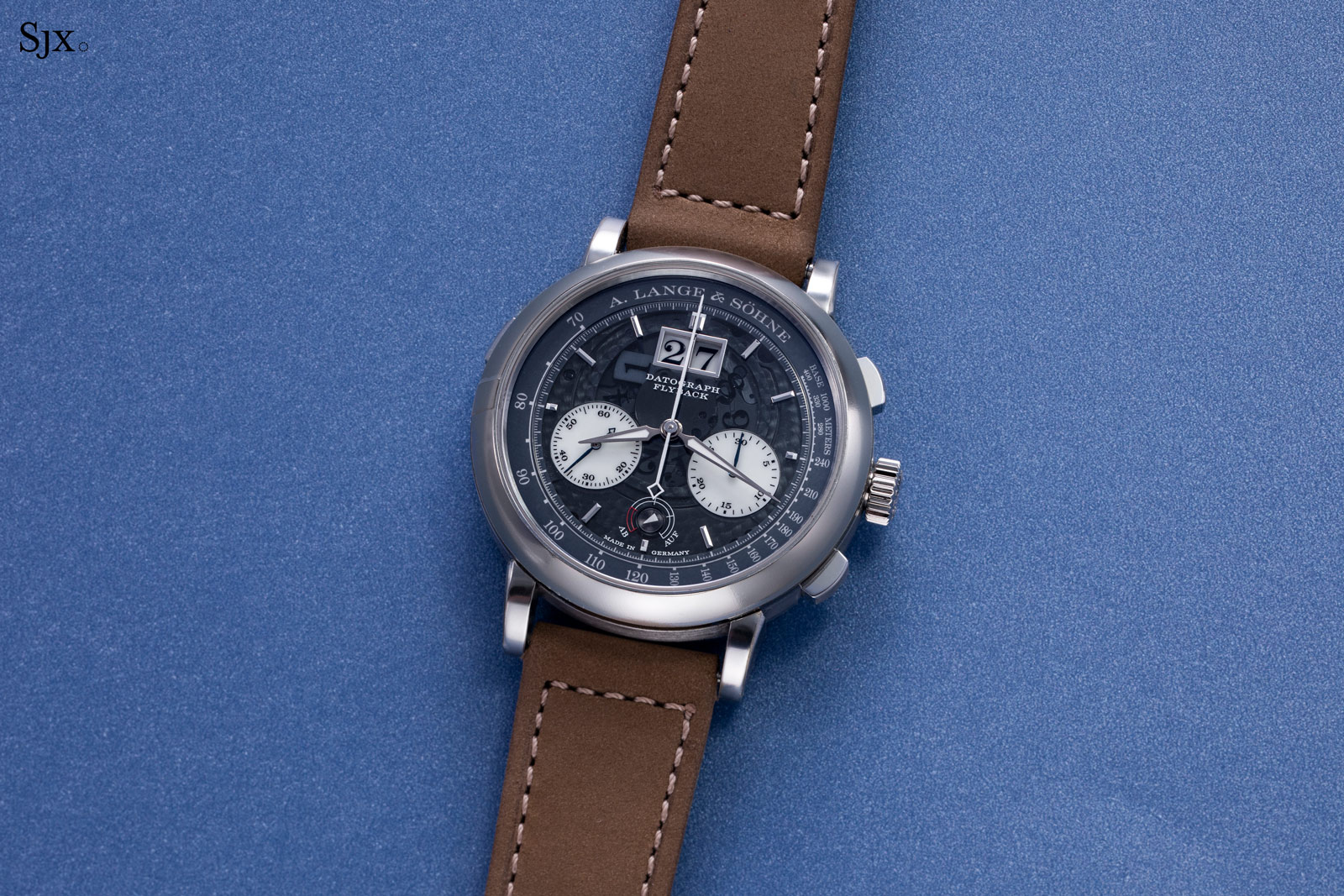
The glow-in-the-dark format is antithetical to the brand’s typical restrained and classical styling, but the result is striking – making the watch interesting both day and night.
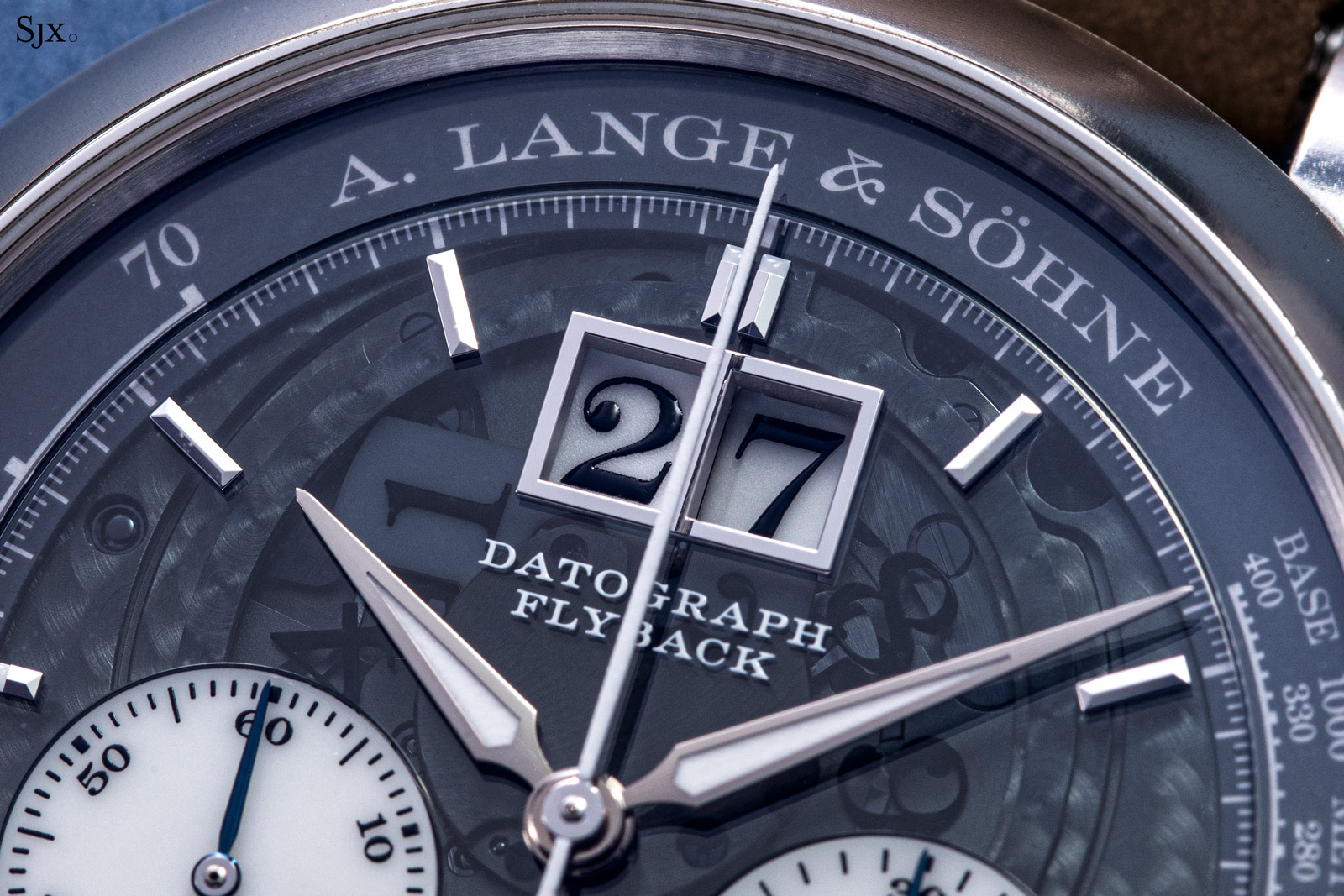
Then there’s the movement, which is almost identical to the standard calibre, which was great to begin with. The movement really is beyond reproach (and you can find out why here).
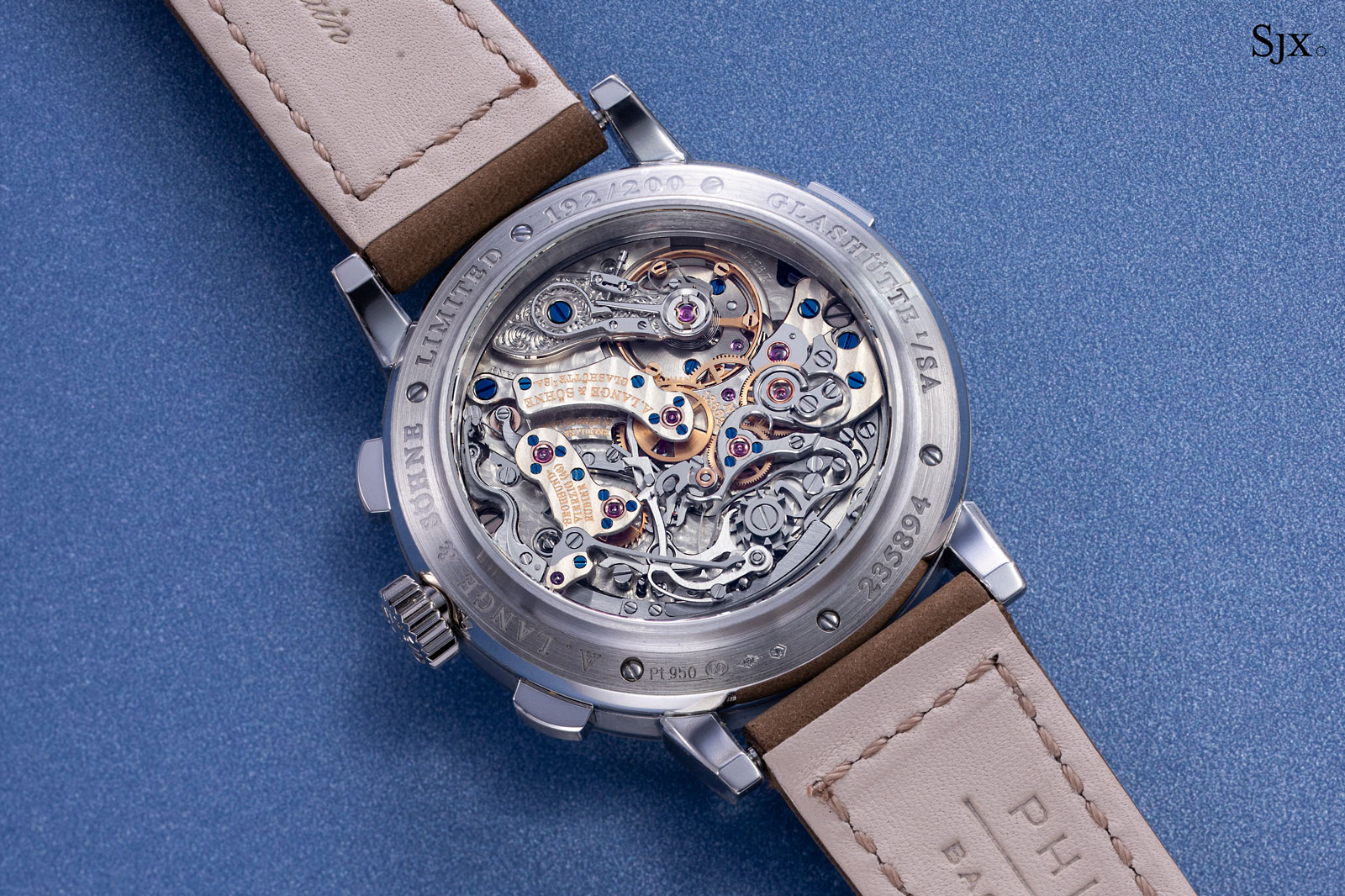
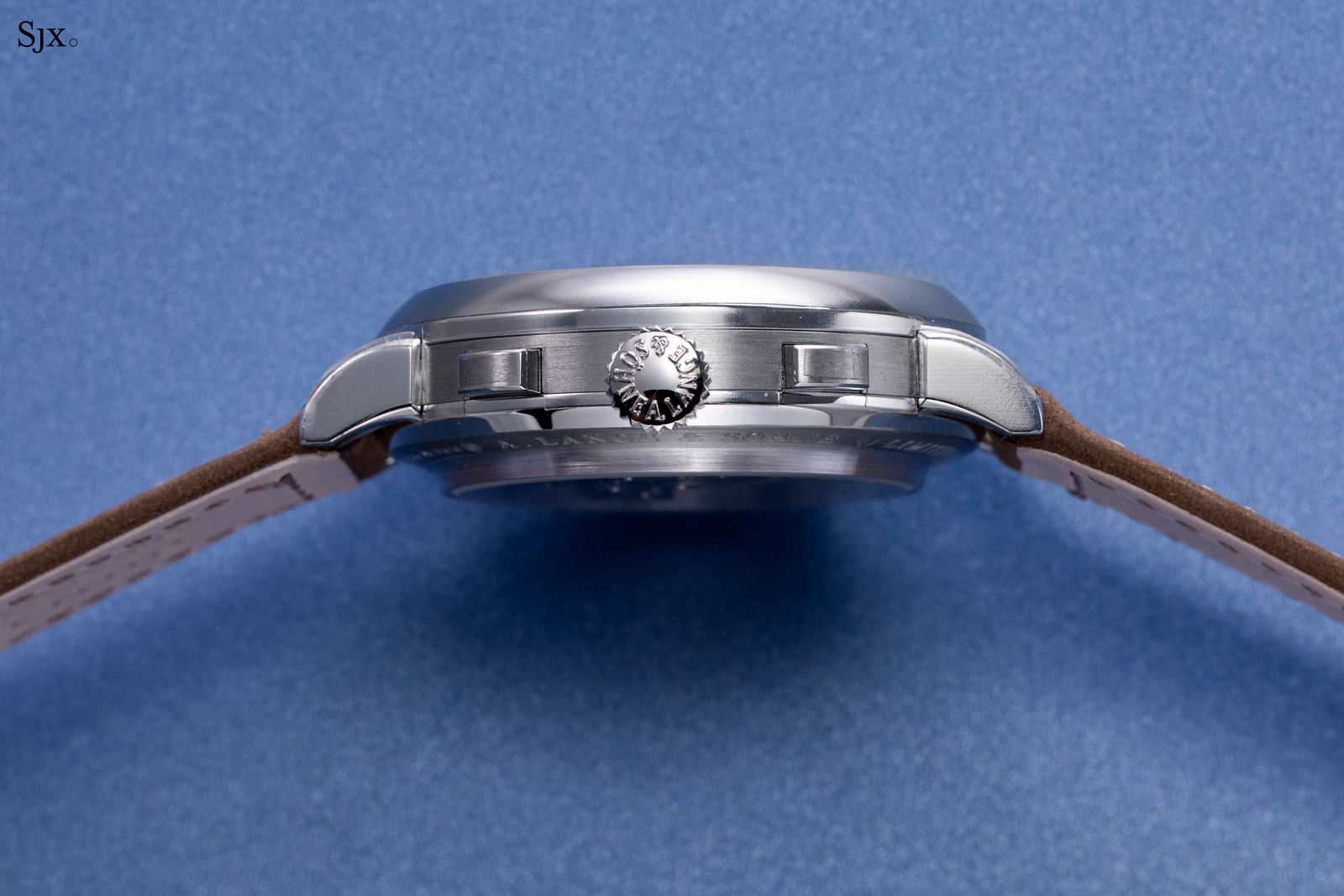
Consigned by the original owner, this example is in immaculate condition – the protective sticker on the bezel remains intact – and naturally it includes all the original accessories.
It has an estimate of HK$780,000-1.56 million, or about US$100,000-200,00, but crossing the high estimate would not be a surprise, given that one sold for around US$380,000 at Phillips’ Geneva auction earlier this month. Full lot details here.
Lot 895: A. Lange & Söhne Richard Lange “Pour Le Mérite”
Unlike the Datograph Lumen, this limited edition Lange sells for close to its original retail price on the secondary market, and it is boasts one of the brand’s signature complications, this time the chain and fusee.
In fact, for serious, technically-minded fans of the brand, the chain and fusee is one of Lange’s defining complications, because the German watchmaker was the first to install it in a wristwatch with the Tourbillon Pour le Mérite in 1994.
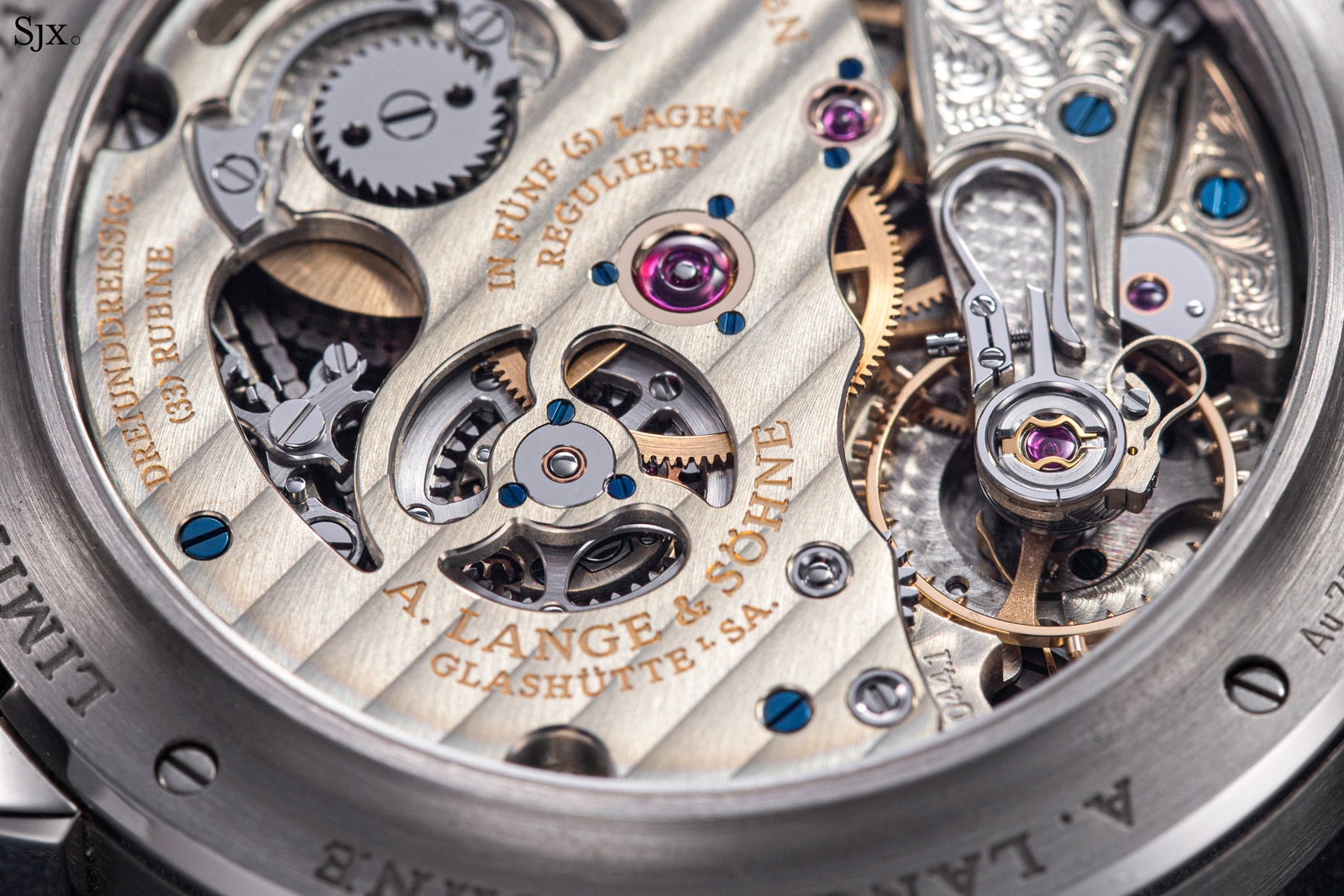
The Richard Lange “Pour Le Mérite” is a more recent model that’s a pure-play fusee and chain wristwatch that does away with the tourbillon. That leaves the watch deceptively simple on the front, though the movement consists of some 900 parts (thought more than half of that is the chain and its individual links).
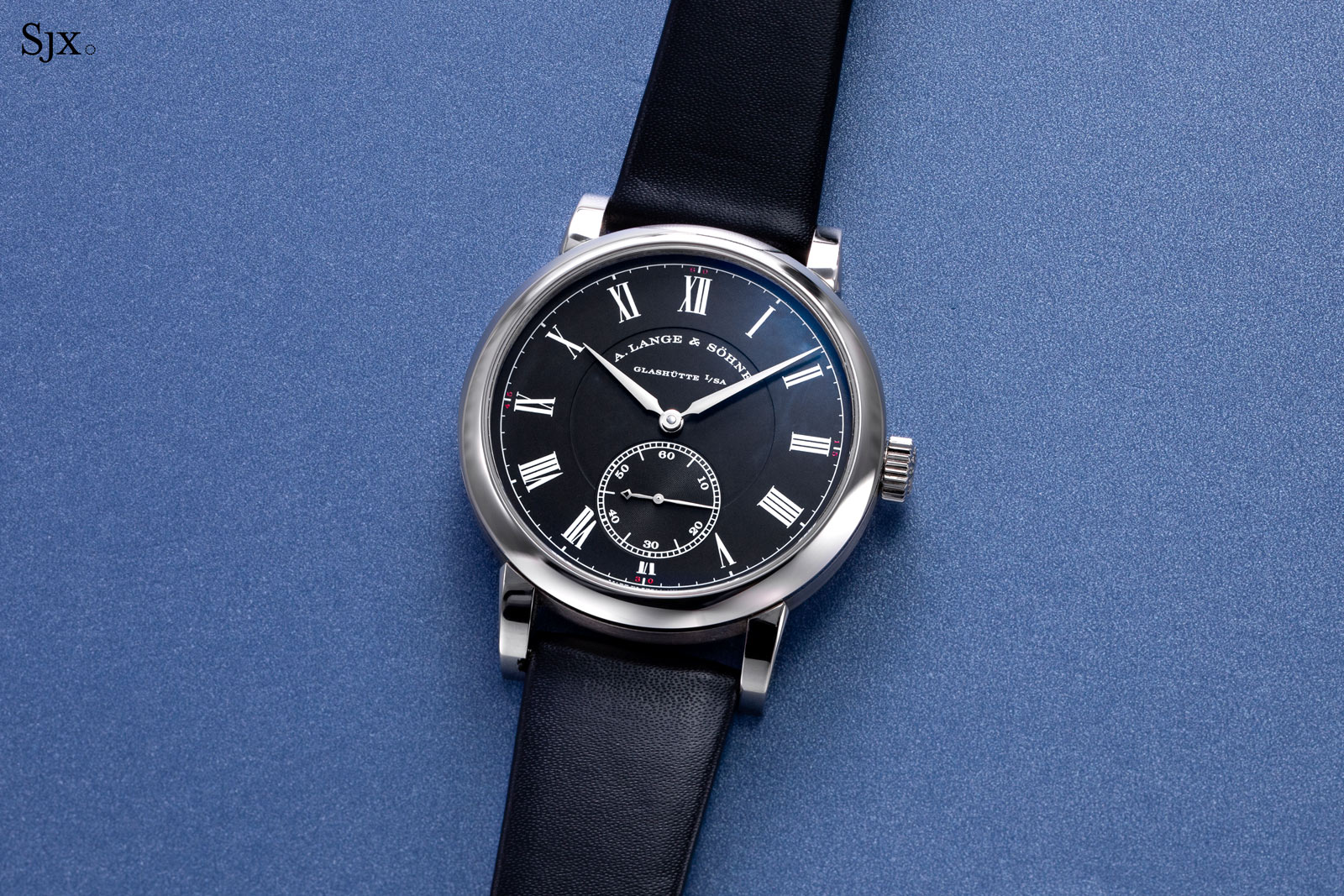
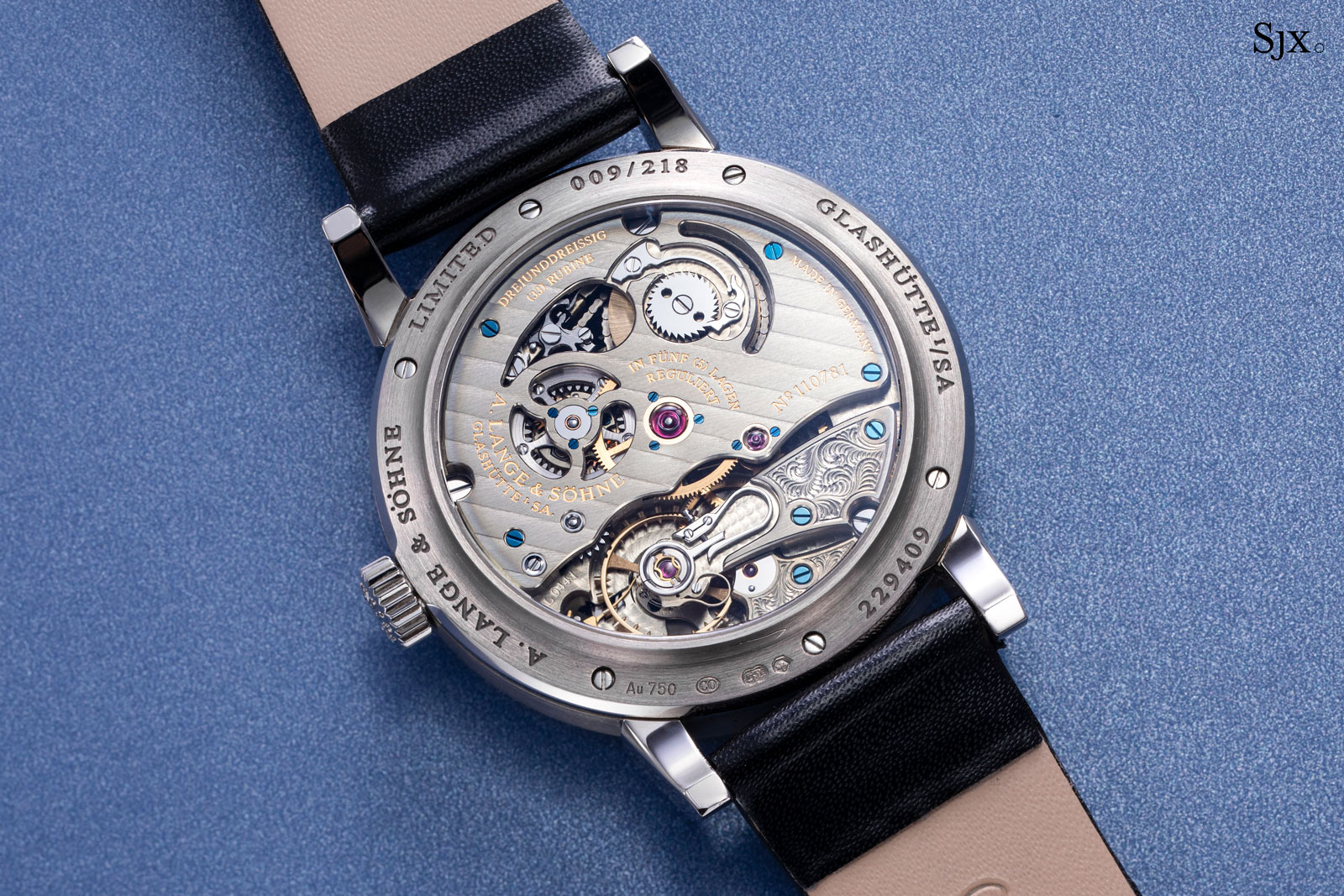
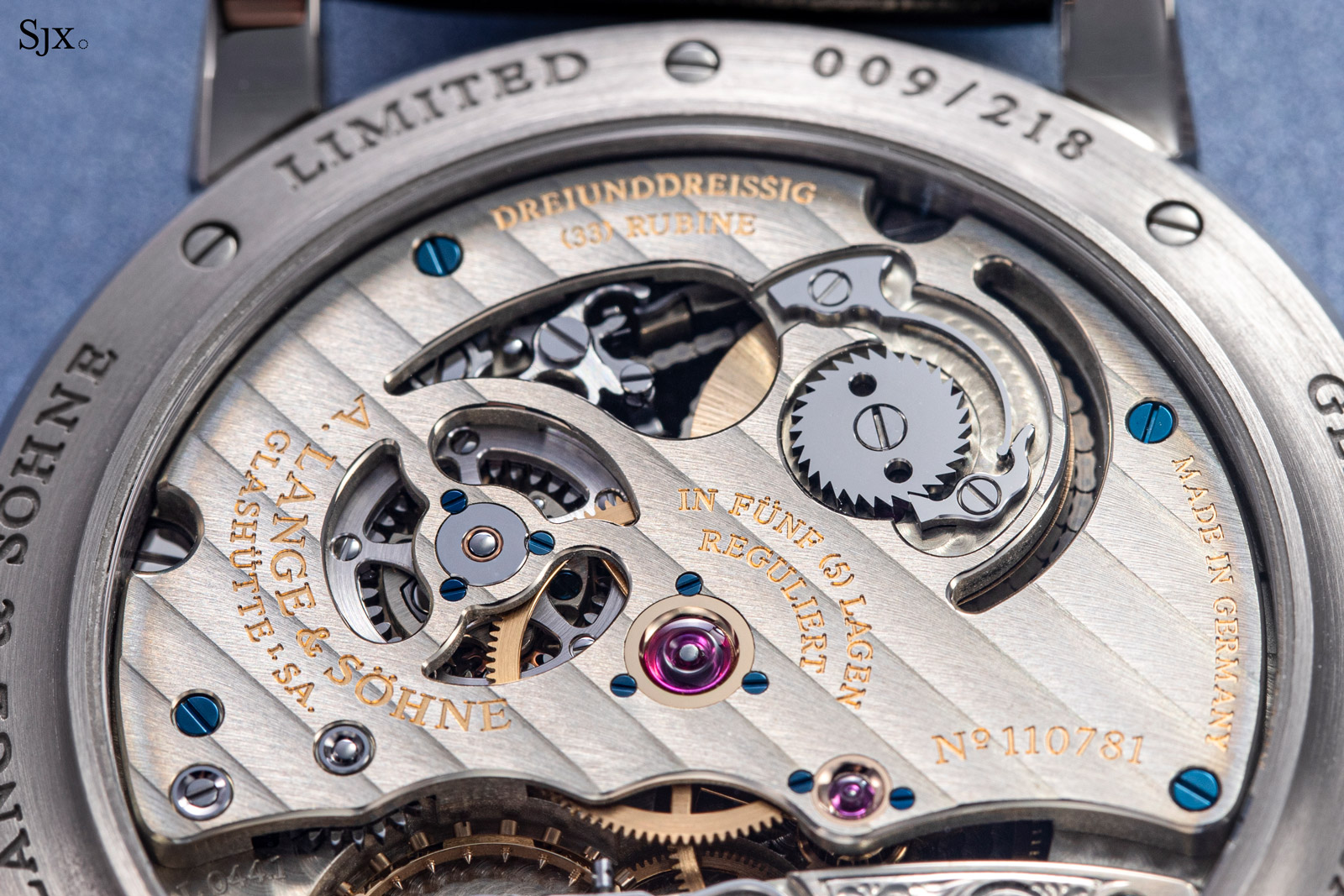
Notably, the Richard Lange “Pour Le Mérite” has never made it into the regular catalogue; it was only ever produced as a limited edition.
It was originally introduced in either rose gold or platinum, both with a white enamel dial, and later in the version shown here: white gold with a striking black dial that goes well with the solid, hefty feel of the watch.
This version was a limited edition of 218 pieces – the somewhat odd limited edition number being Lange’s points of sale worldwide at the time of launch.
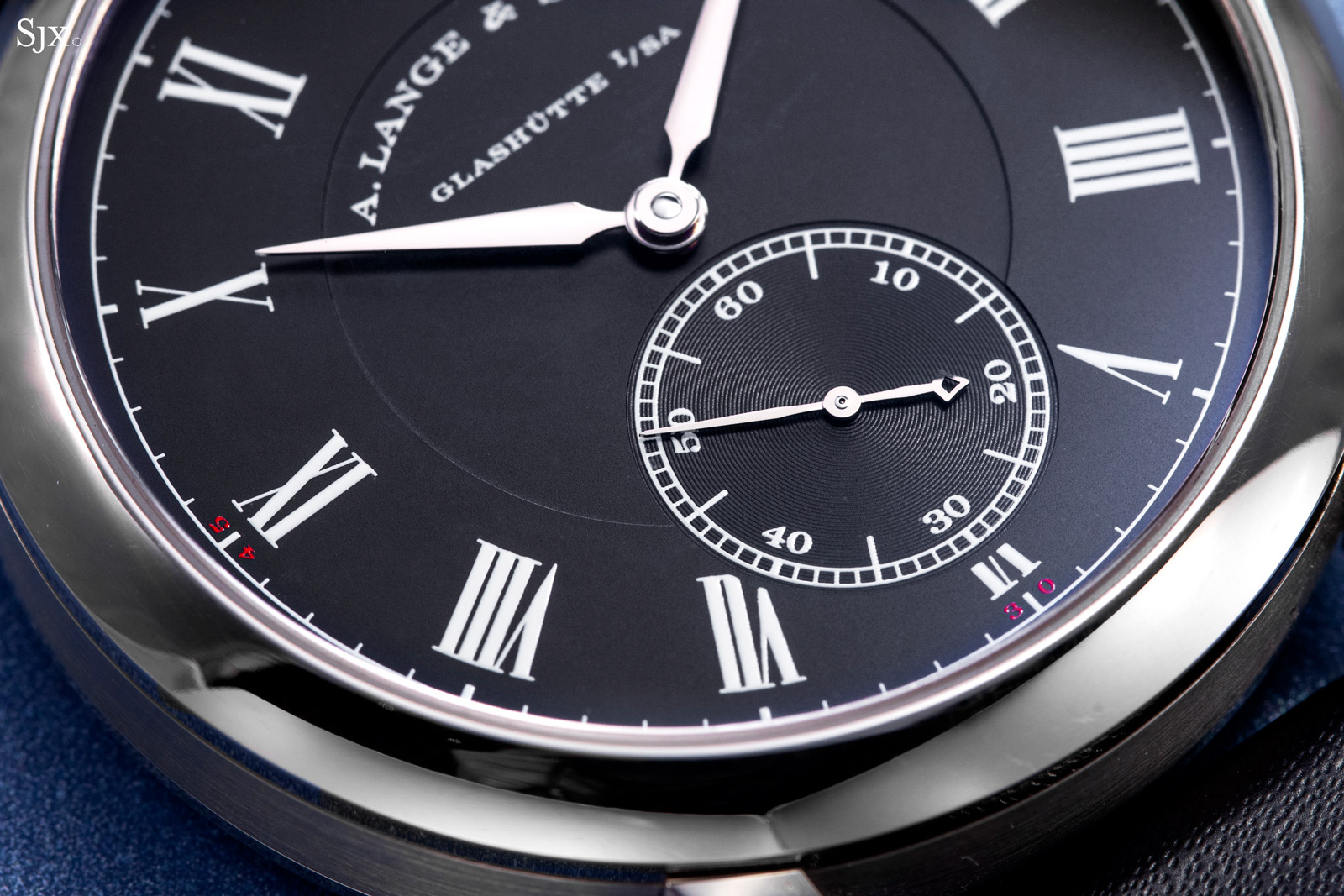
The present example is a full set, and has an estimate of HK$300,000-500,000, or about US$38,500-64,100. Full lot details here.
Lot 994: A. Lange & Söhne 1815 Thin Honeygold
Up next is the 1815 Thin Honeygold, which is not a complicated watch, but instead one of the simplest watches in the brand’s catalogue – it doesn’t even have a seconds hand.
But it’s special in a few ways. For one, it’s unique model that’s a cross between an 1815 and the Saxonia Thin – it’s basically a Saxonia Thin in 1815 dress. It was part of the three-piece set made to mark the 175th anniversary of the birth of Ferdinand Adolph Lange.
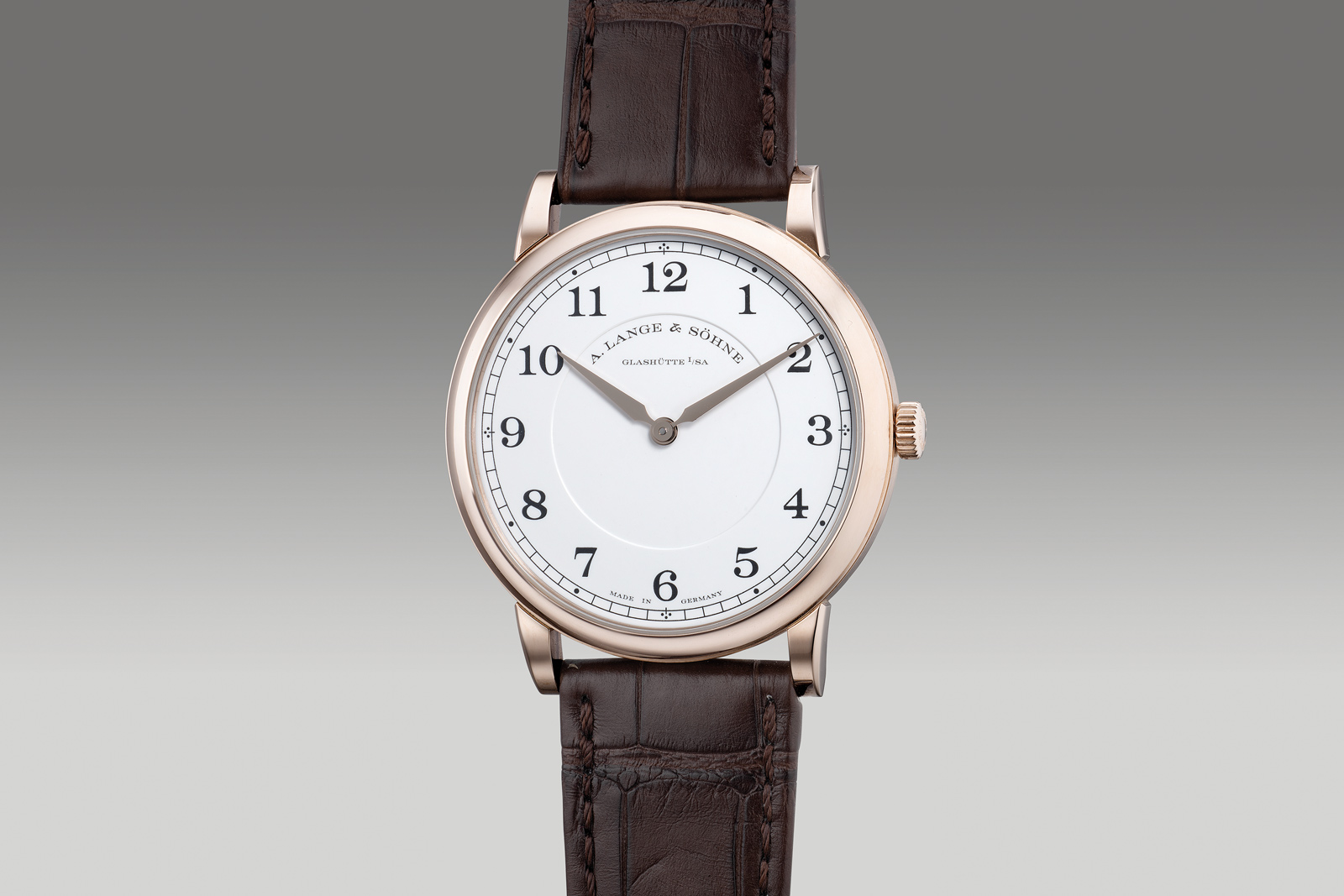
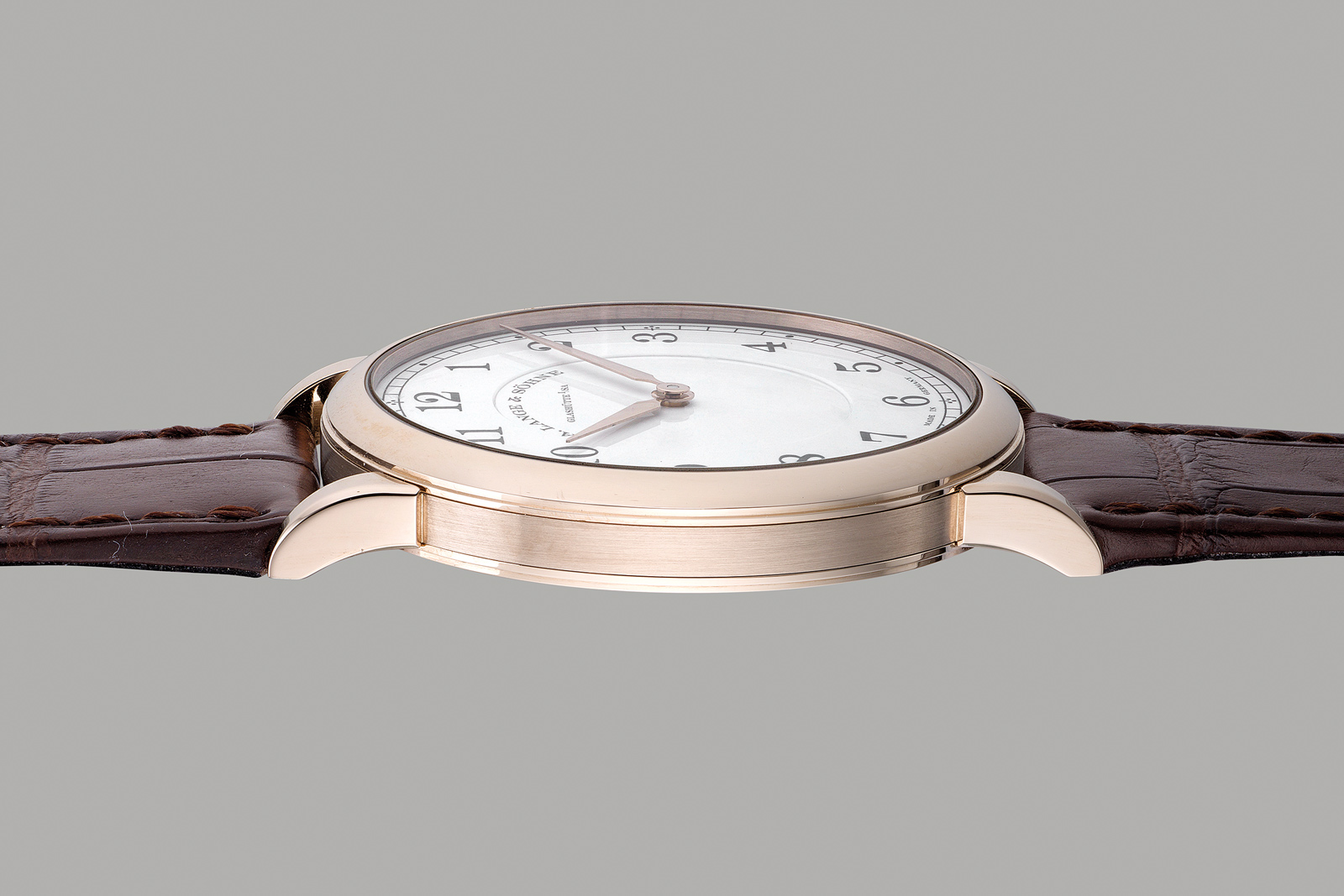
Like the Saxonia Thin with only two hands, but with a slightly heftier case and Arabic numerals that are typical of the 1815 family
And it’s been dressed up unusually for the anniversary. The case is Honeygold, the brand’s proprietary gold alloy used only for limited edition watches. It has a subtle tone that’s a cross between pink and yellow gold. Here it’s matched with a fired enamel dial, which is unusual for a Lange wristwatch that is relatively entry level. Enamel dials are almost always found in the brand’s top-of-the-line models.
At the same time, the movement decoration is also different and unique to the 175th anniversary watches. For instance, the three-quarter plate gets a fine frosting instead of the standard striping. Less obvious is the circular graining on the barrel ratchet and crown wheel, as well as the engraving filled with dark grey lacquer.
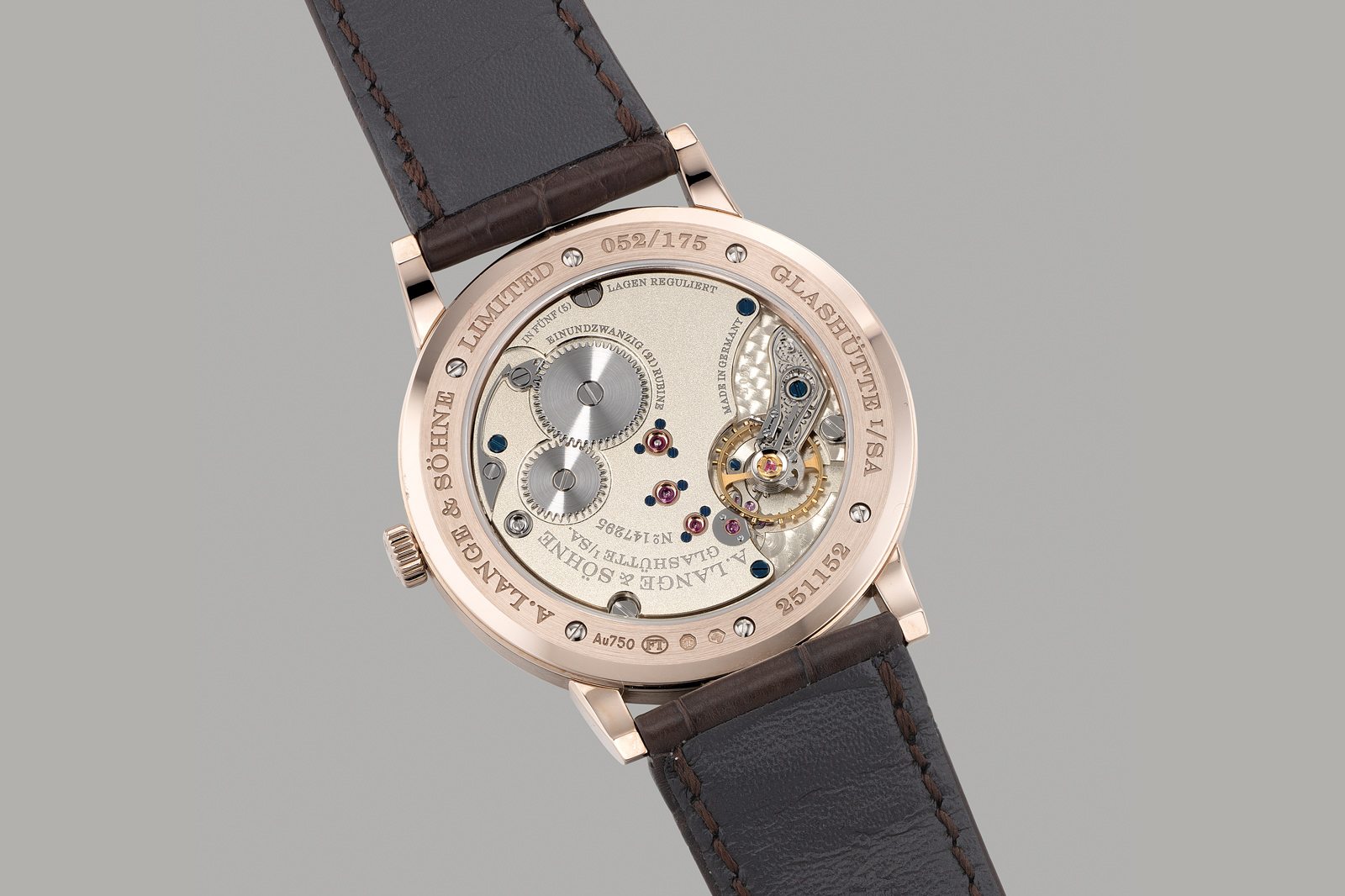
Being a recent launch – the model was introduced just last year – this 1815 Thin Honeygold is in mint condition and includes all its boxes and documents.
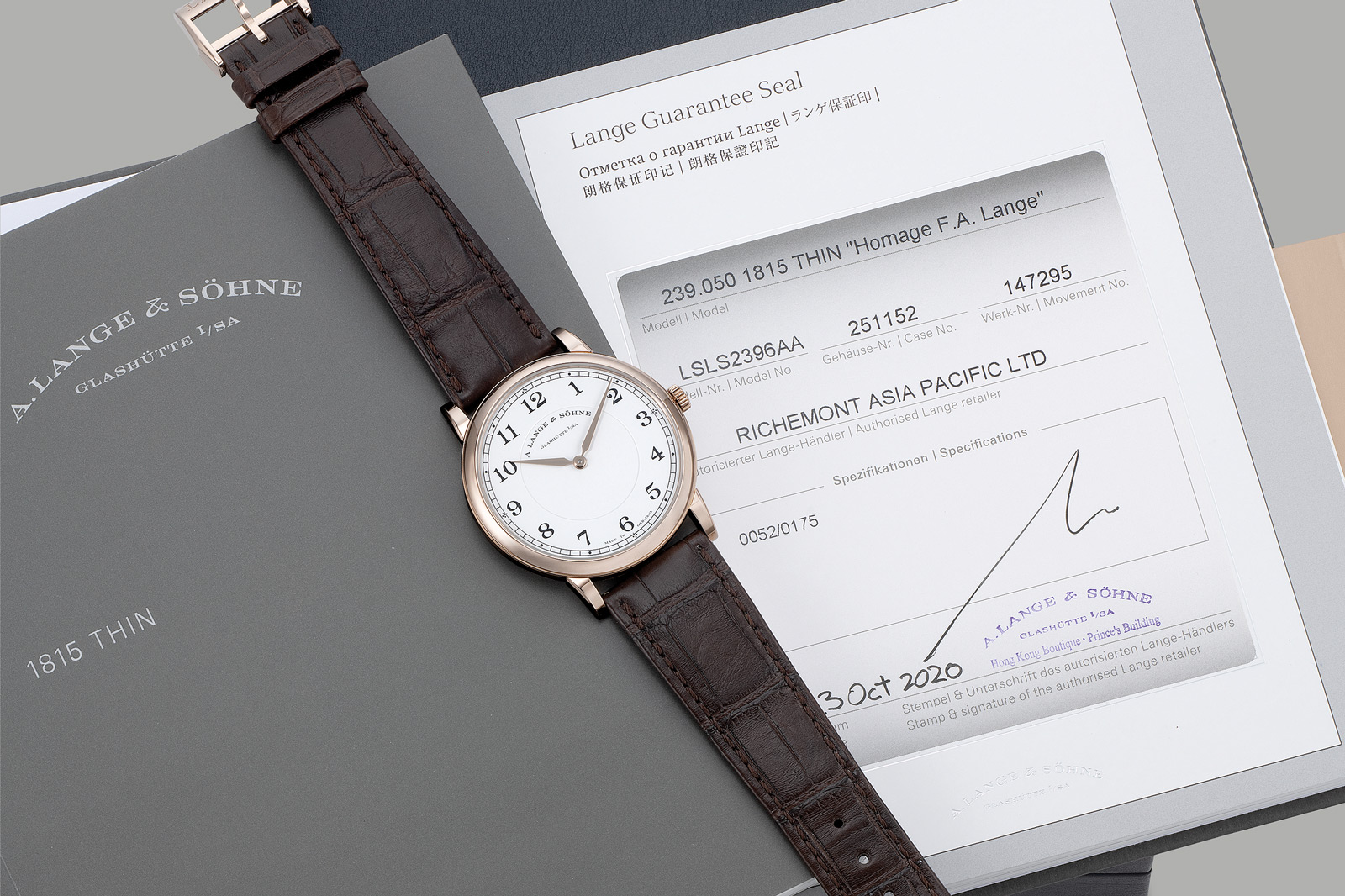
In comparison to most of the other Lange watches in the sale, the 1815 Thin Honeygold is affordable, with an estimate of HK$100,000-200,000, or about US$12,800-25,600. While that underestimates its value, the watch was not too expensive to start with, retailing for about US$34,000 when new. Full lot details here.
Lot 996: A. Lange & Söhne Zeitwerk in yellow gold
Returning to complications, the Zeitwerk is one of Lange’s trademark complicated watches. It is a digital mechanical watch that is almost perfectly executed in technical and functional terms, something that can’t be said of most of its peers.
More broadly, the Zeitwerk is notable for being the first wristwatch with a horizontally linear display of the digital hours and minutes, which brings to mind an electronic digital watch.
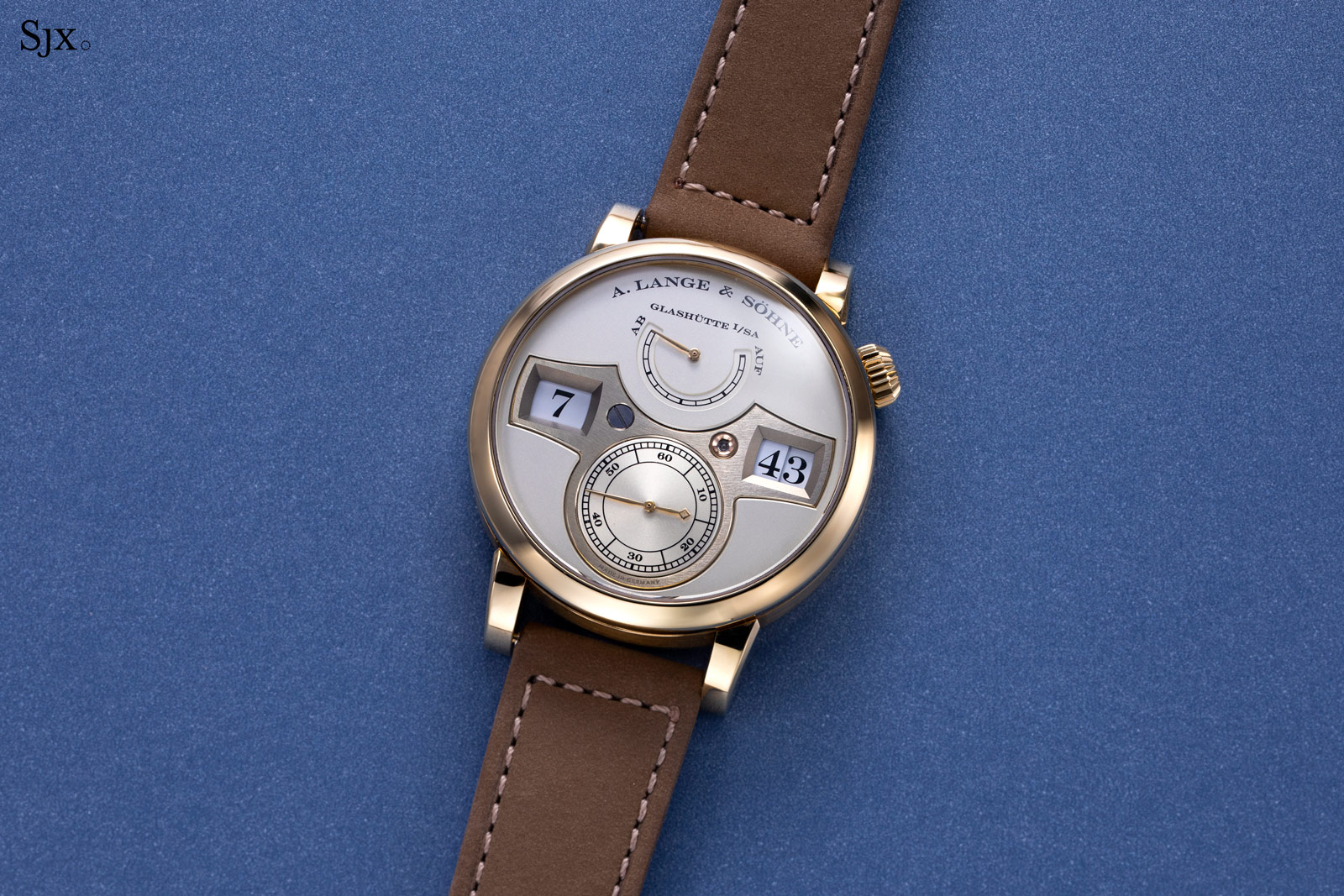
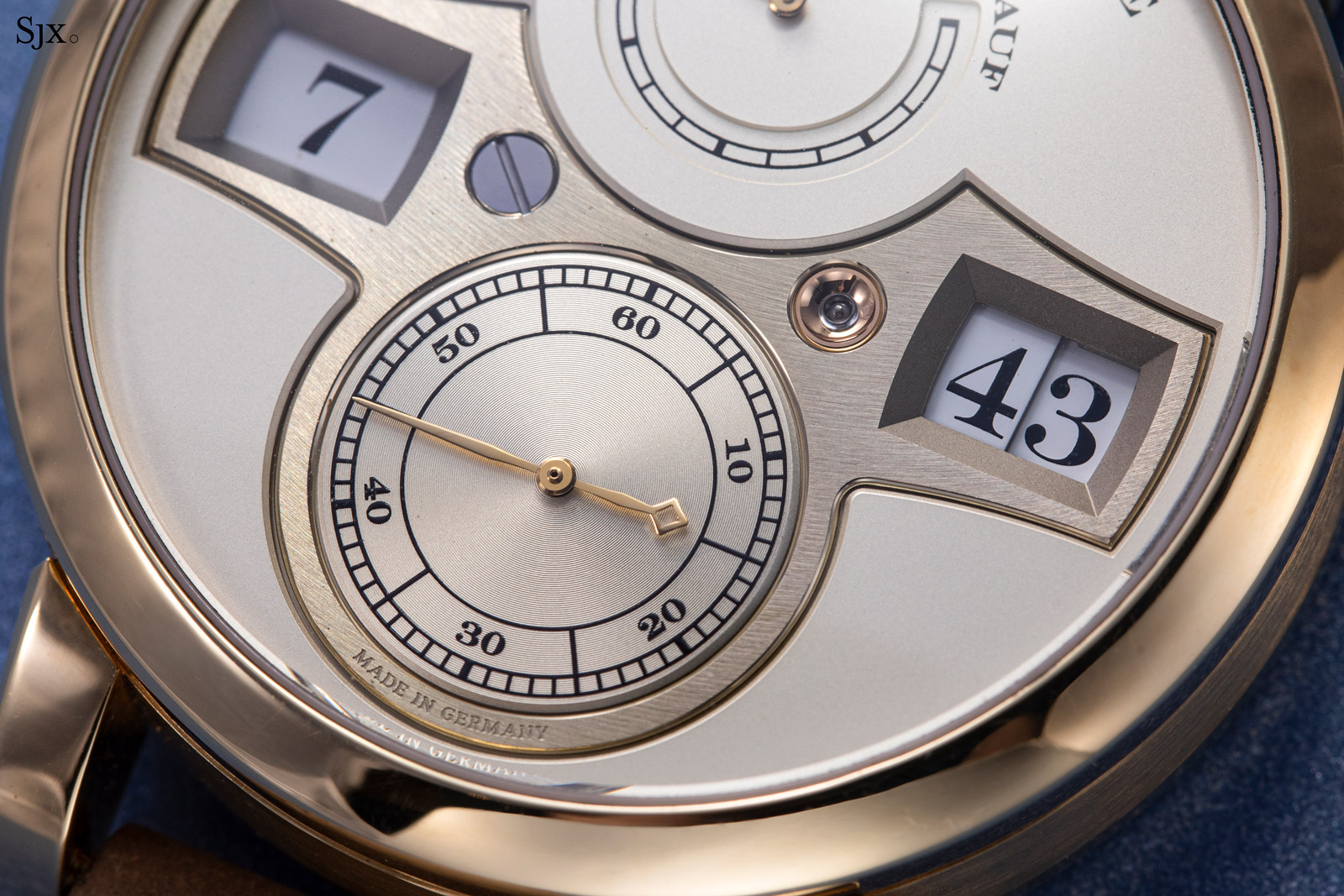
The Zeitwerk is typically German in its execution, which means solid, robust engineering centred on practicality. That’s evident in the straightforward layout with extra-large discs that maximise legibility.
And also obvious in the construction of the movement, which relies on an elaborate constant force mechanism to facilitate the jumping of the discs without impacting timekeeping.
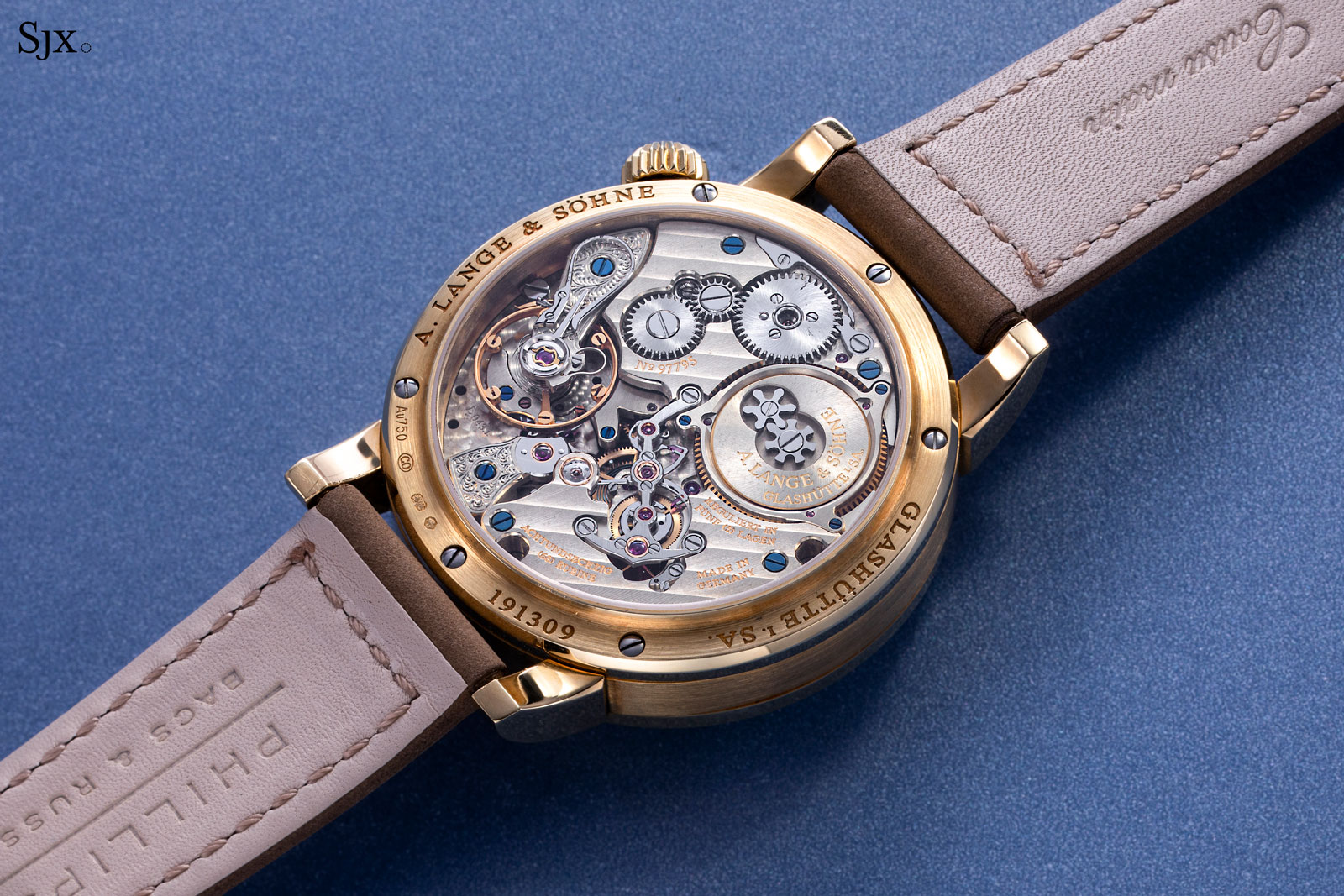
With the first generation Zeitwerk having been recently discontinued, the model will surely become more desirable. And the present example is a little more special because of its yellow gold case, which is relatively uncommon both for the model as well as Lange in general.

Presented without its boxes or papers, the Zeitwerk in yellow gold has a reasonable estimate of HK$235,000-390,000, or about US$30,100-50,000. Full lot details here.
Lot 1037: Cartier Santos 100 Skeleton Palladium
There has been a resurgence of interest in Cartier’s simple, classic designs, but its complicated watches still go under the radar, despite the fact that some of them are accomplished watches in a technical sense.
The Santos 100 Skeleton is illustrative of that, because it elegantly blends high horology and Cartier’s signature style. The base plate has been creatively open-worked to form the Roman numerals that are typical of the brand, resulting in a look that’s modern yet distinctly Cartier.
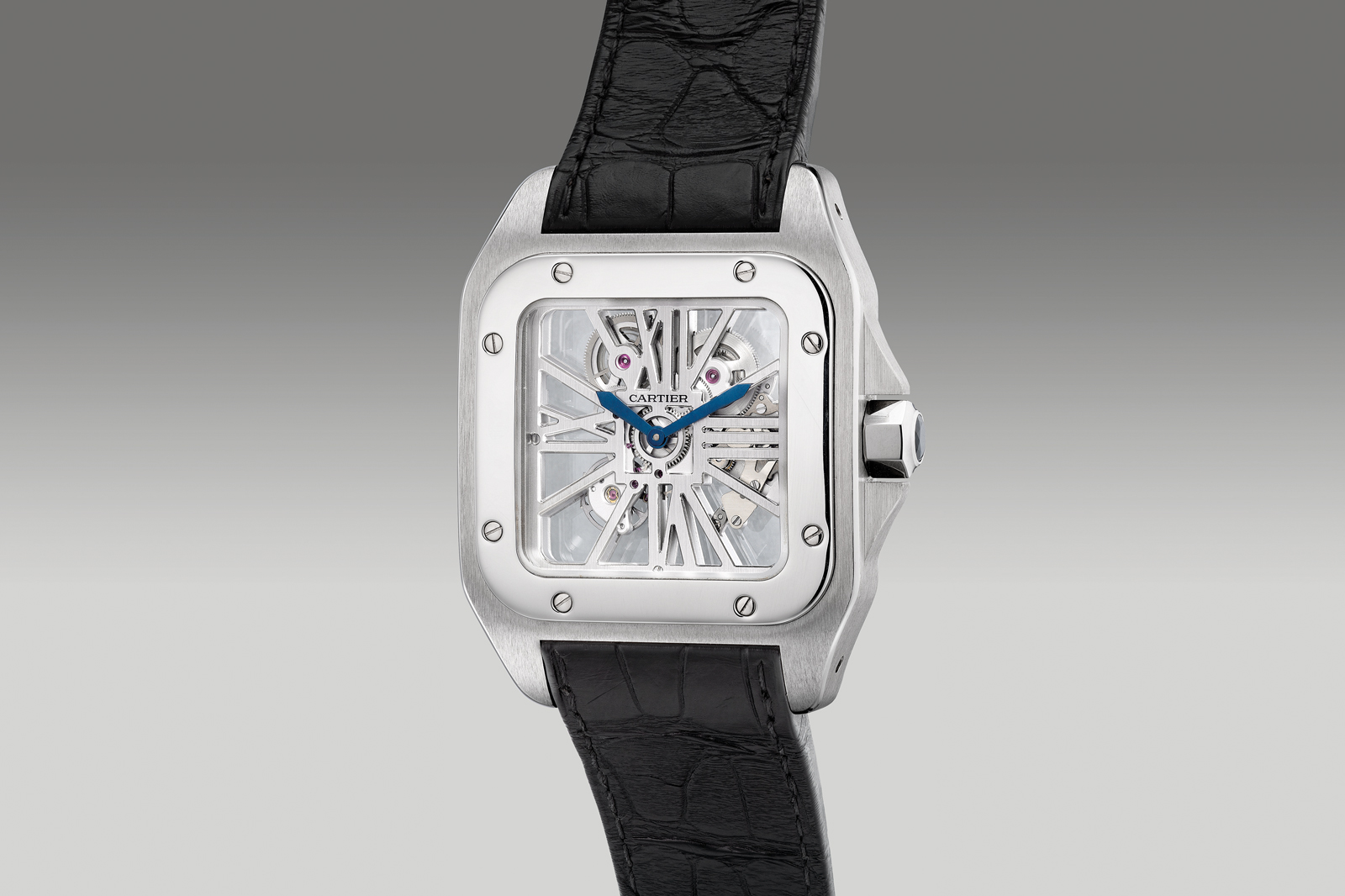
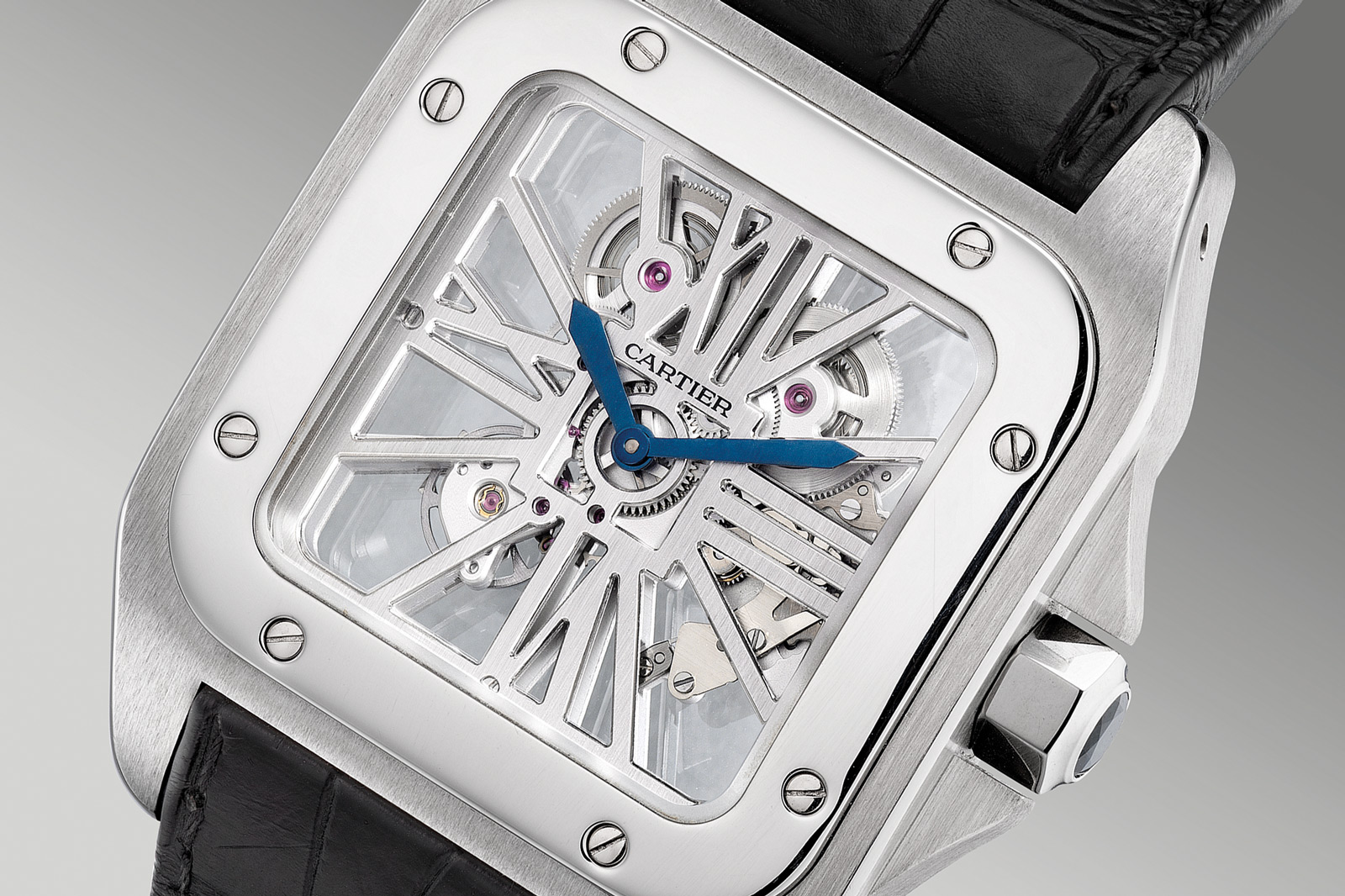
The movement has twin barrels that are visible at 12 o’clock
Like the standard Santos 100 – which was created in 2004 for the 100th anniversary of the model – the skeleton version is a chunky watch. But it is unique amongst the Santos for having a palladium case, which gives it a bright, silvery sheen and heft comparable to platinum (because both metals are part of the platinum family).
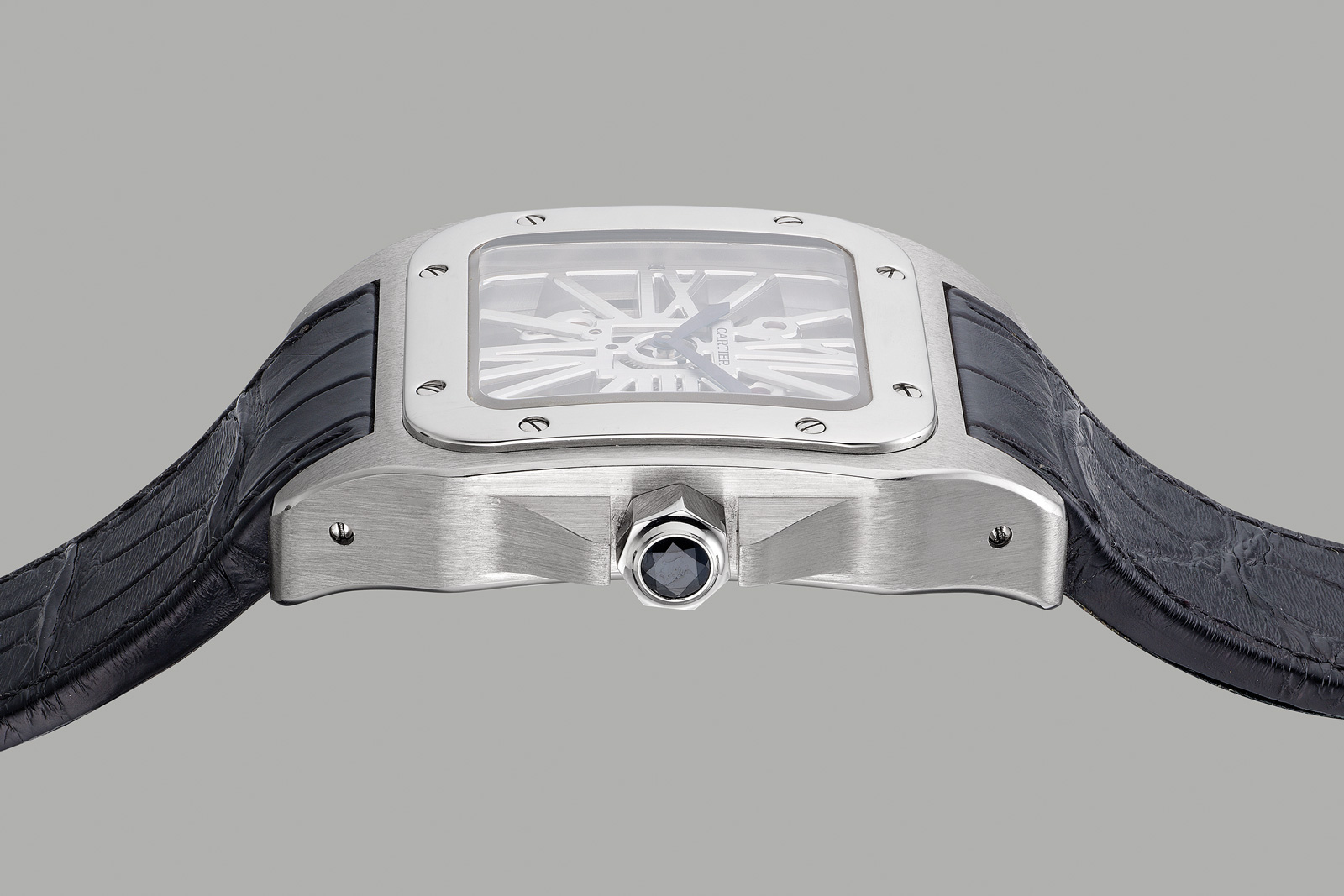
Importantly, the movement is finished well. Though not quite artisanal, the decoration is fine enough that it is appealing, especially the polished bevels that outline the Roman numerals – the number of bevels means the movement catches the light nicely.
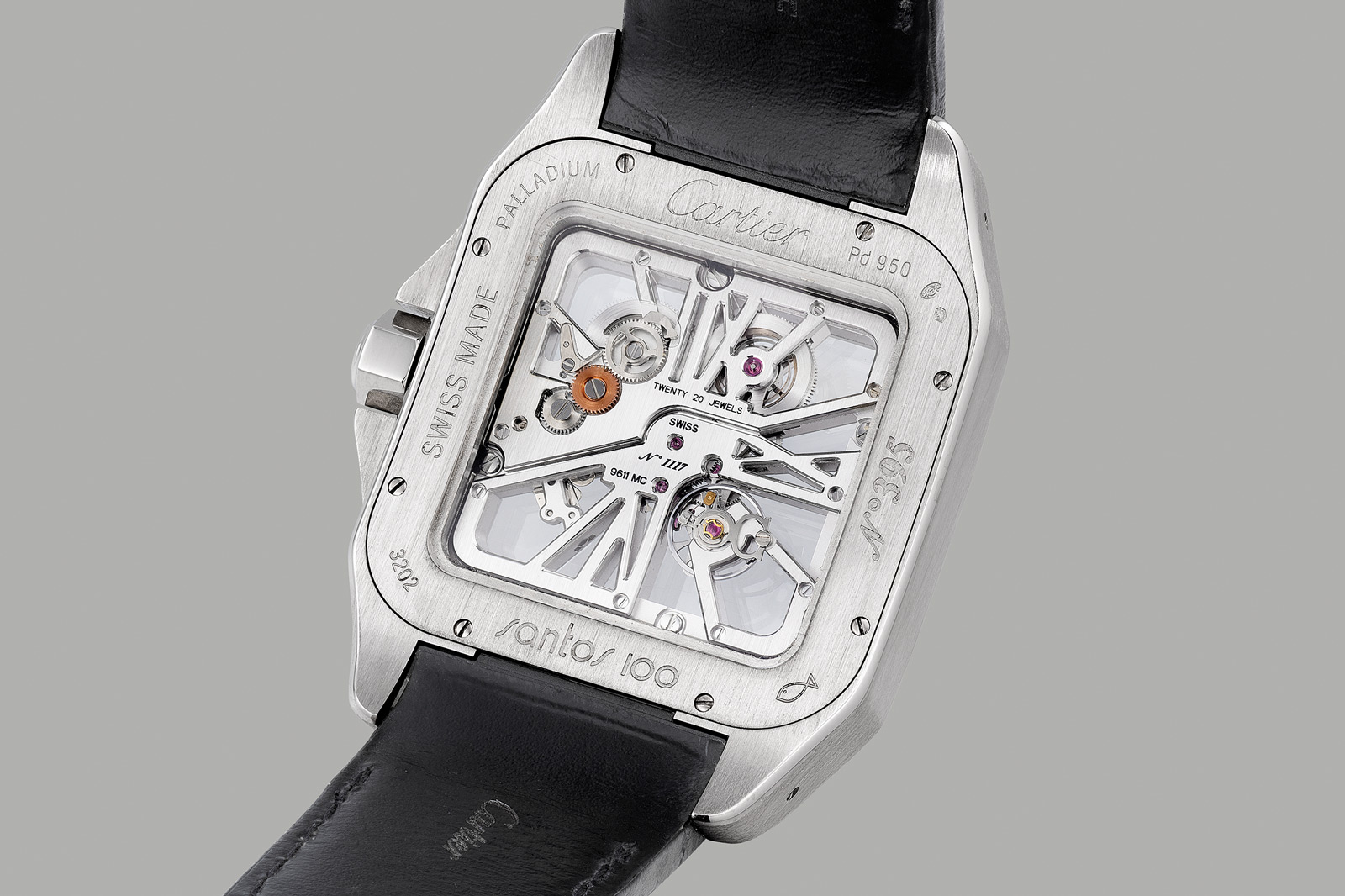
The Santos 100 Skeleton is representative of modern-day Cartier, while being faithful to its historical style. It has an estimate of HK$160,000-220,000, or about US$20,500-28,200. Full lot details here.
Lot 1086: Piaget Emperador Tourbillon
The Piaget Emperador Tourbillon is notable for its technical qualities – but it’s obscure and under-appreciated since the brand is typically associated with round, ultra-thin watches and jewellery. Relatively to the horological content within, the Emperador might potentially be one of the best value buys of the sale.
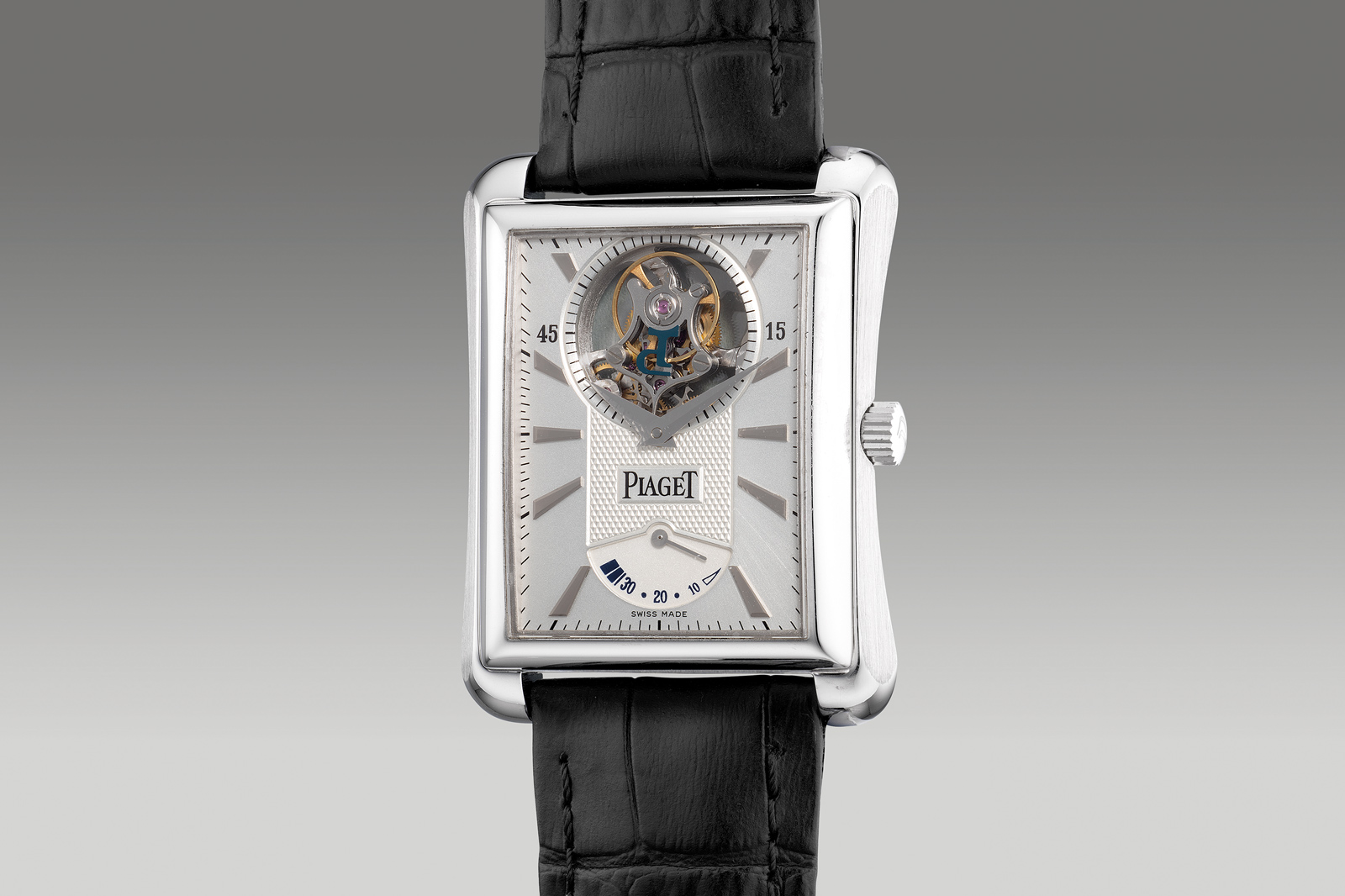
The Emperador is noteworthy for its form case, meaning it isn’t round. The fluid case with its gently flared lugs recalls the 1920s Rolex Prince as well as the Vacheron Constantin “Cioccolatone” of the 1960s. It’s matched with a strong bezel that gives the watch a prominent rectangular face that gives it an imposing feel, though it’s not a particularly large case.
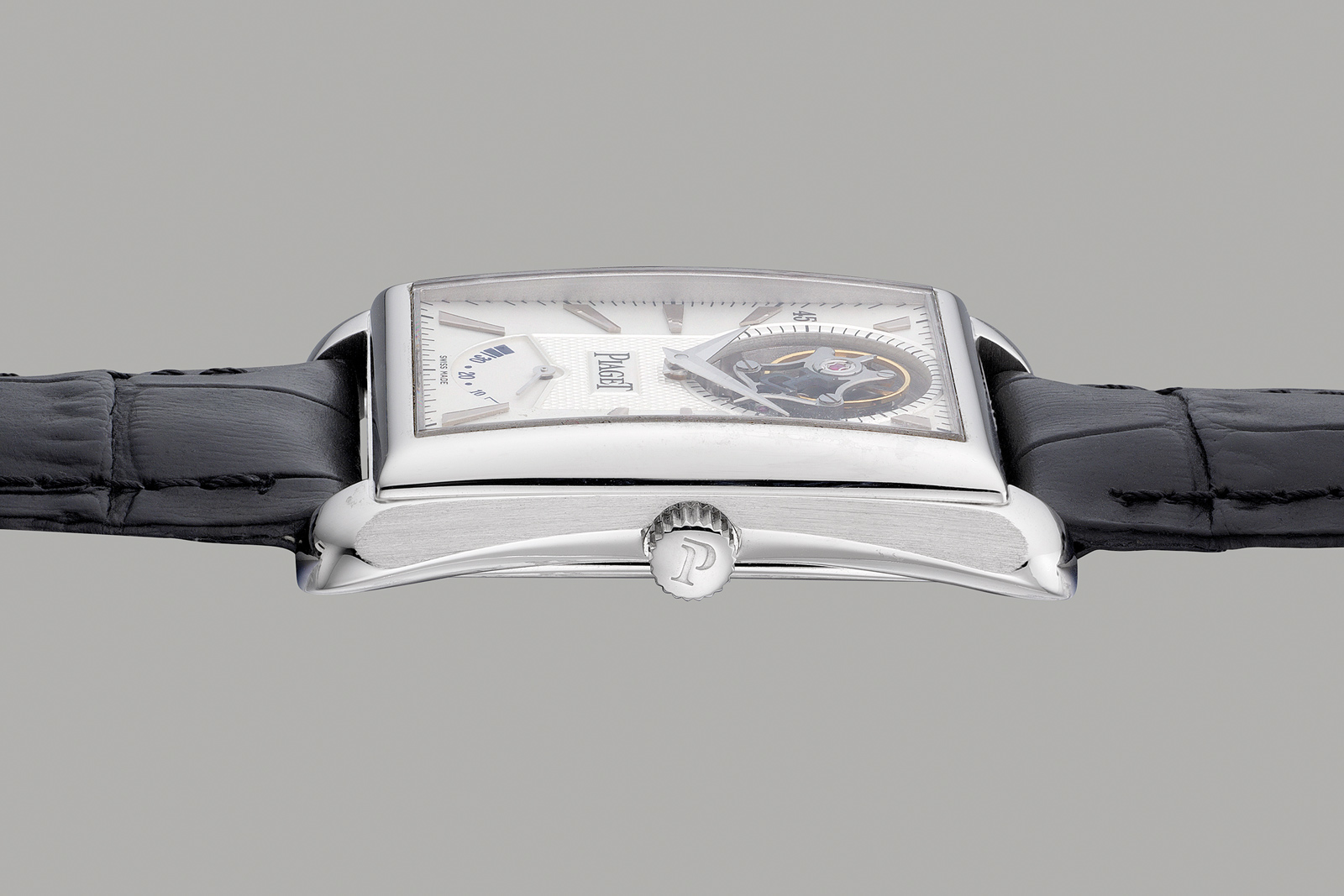
The movement was evidently developed from the ground up for the Emperador, which is evident in its rectangular form. It features two complications, a tourbillon and a power reserve indicator. Notably, the tourbillon is flying, meaning it is only supported via a bridge underneath and not above. And like many Piaget tourbillons of the period it incorporates Piaget’s logo into the cage.
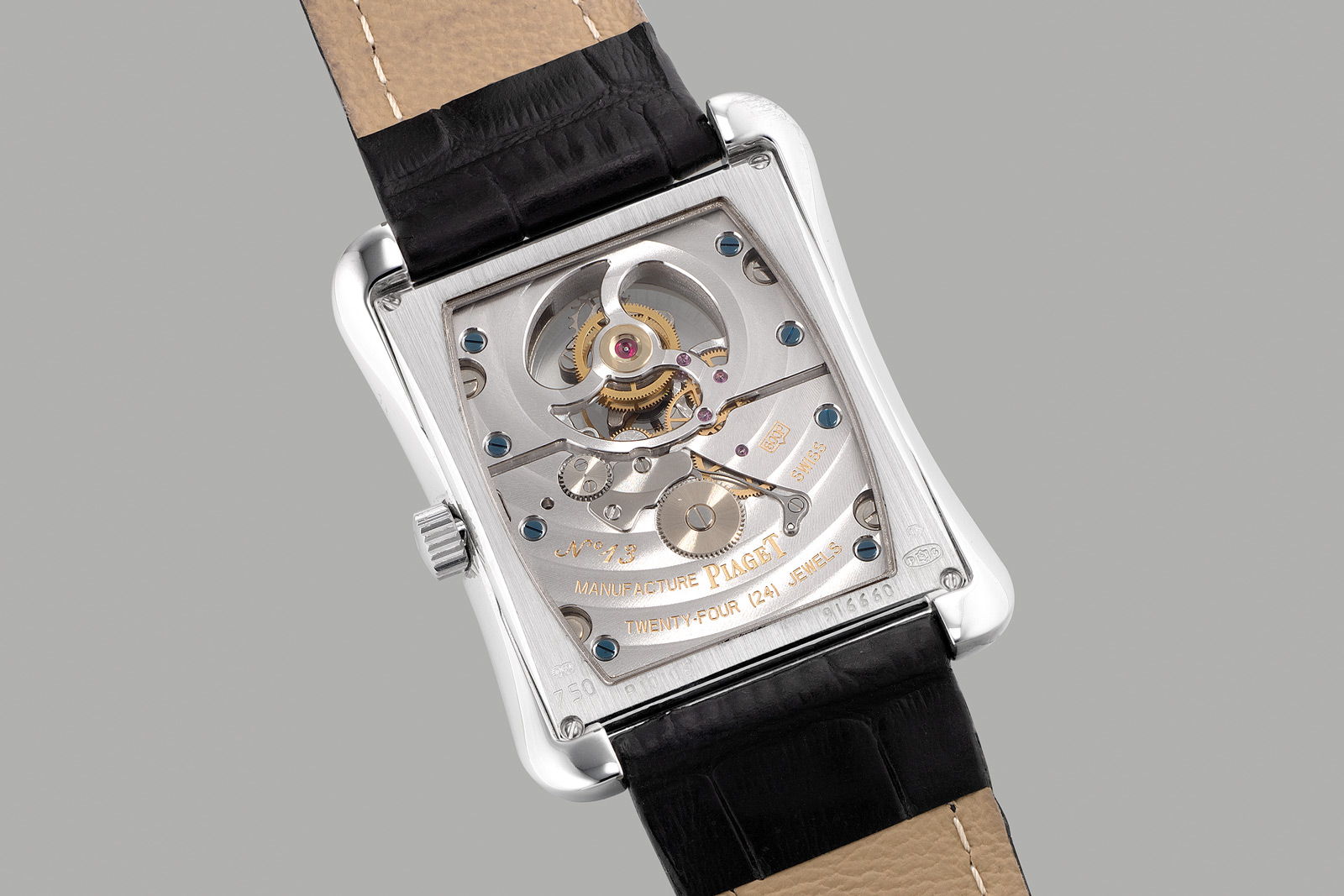
The movement is decorated with rarely-seen cotes circulaires, a quirky choice for a movement that’s not round, but the contrast works well
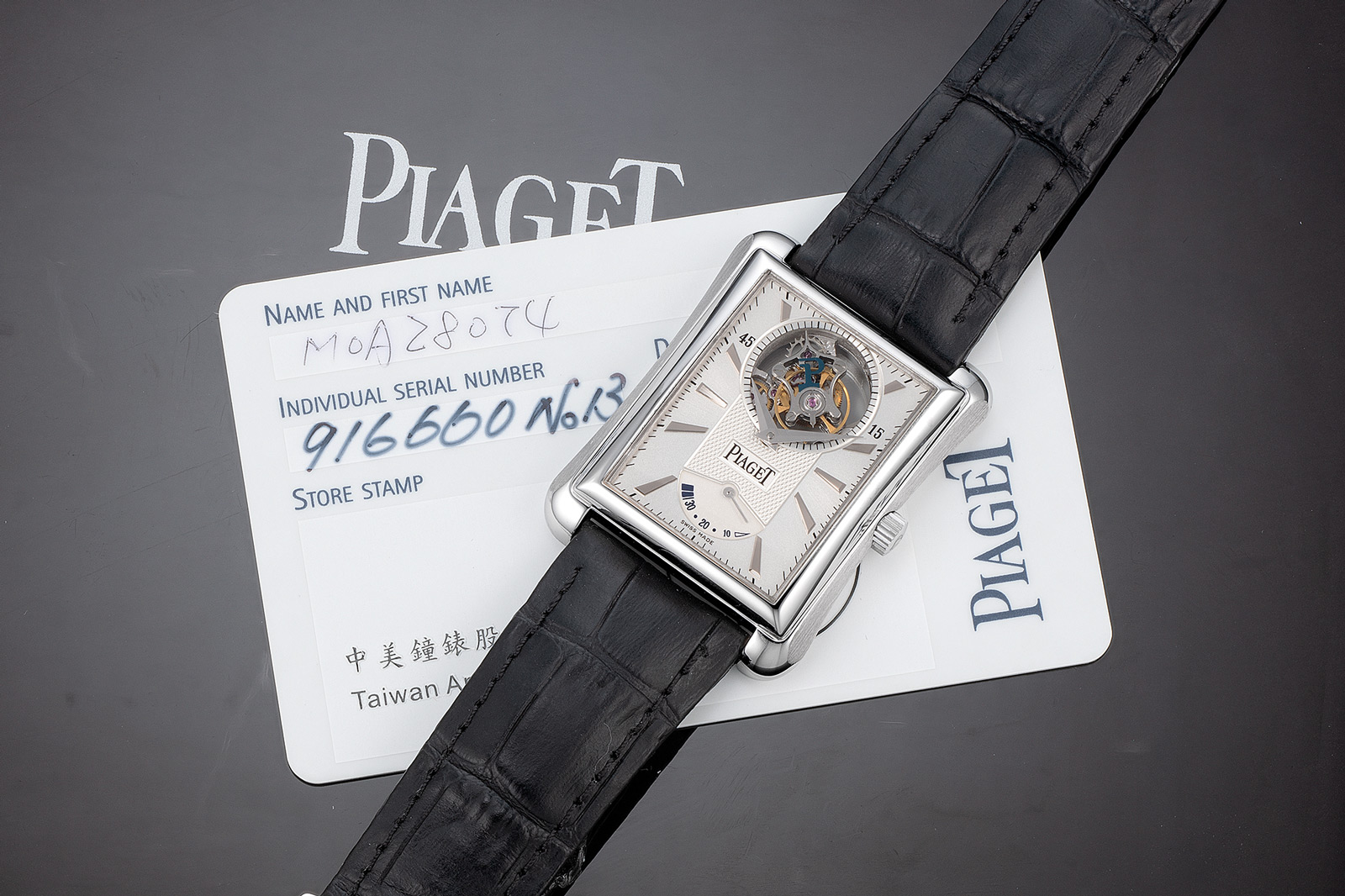
The Emperador Tourbillon is in pristine condition and includes its original box and papers. It has an estimate of HK$155,000-315,000, or about US$19,900-40,400. Full lot details here.
Lot 1103: A. Lange & Söhne Lange 1 Time Zone 25th Anniversary
And the final pick is a complicated Lange in special livery – the Lange 1 Time Zone made for the model’s 25th anniversary.
Released in a small run of just 25 pieces (there were several Lange 1 models made for the occasion), the Lange 1 Time Zone 25th Anniversary sports a blue-and-silver dial, a nod to the ref. 101.027x from the early 2000s, a model that wasn’t in the standard catalogue, making it relatively uncommon today.
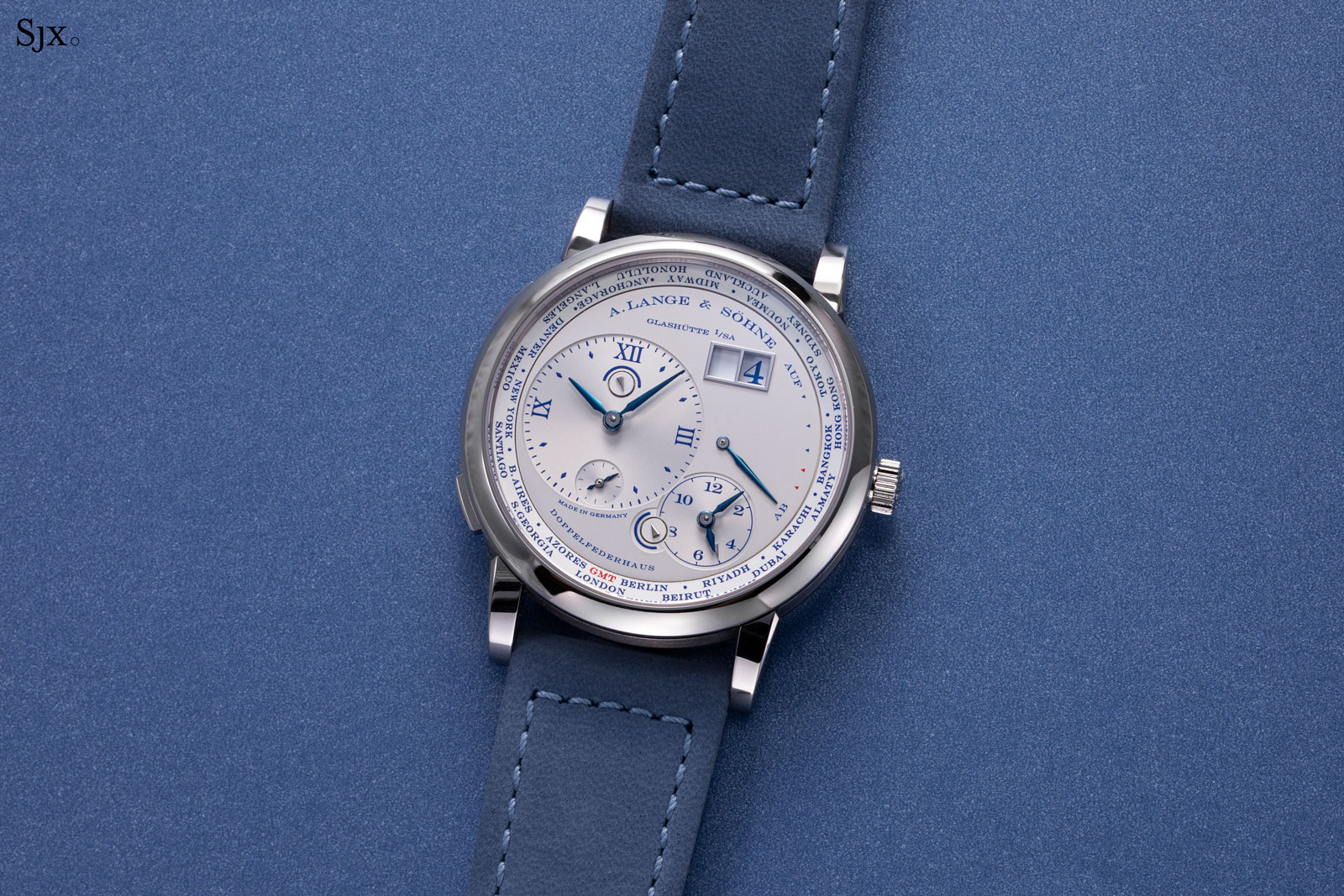
But the blue-and-silver combination is not just rare, it is also intrinsically attractive in a restrained manner that’s typical of Lange.
The use of blue on the dial is thorough – all letters and numbers are rendered in blue, including the numerals on the date discs. The only elements that aren’t blue are “GMT” on the cities disc and the bottom half of the power reserve scale, both of which are in red for functional reasons.
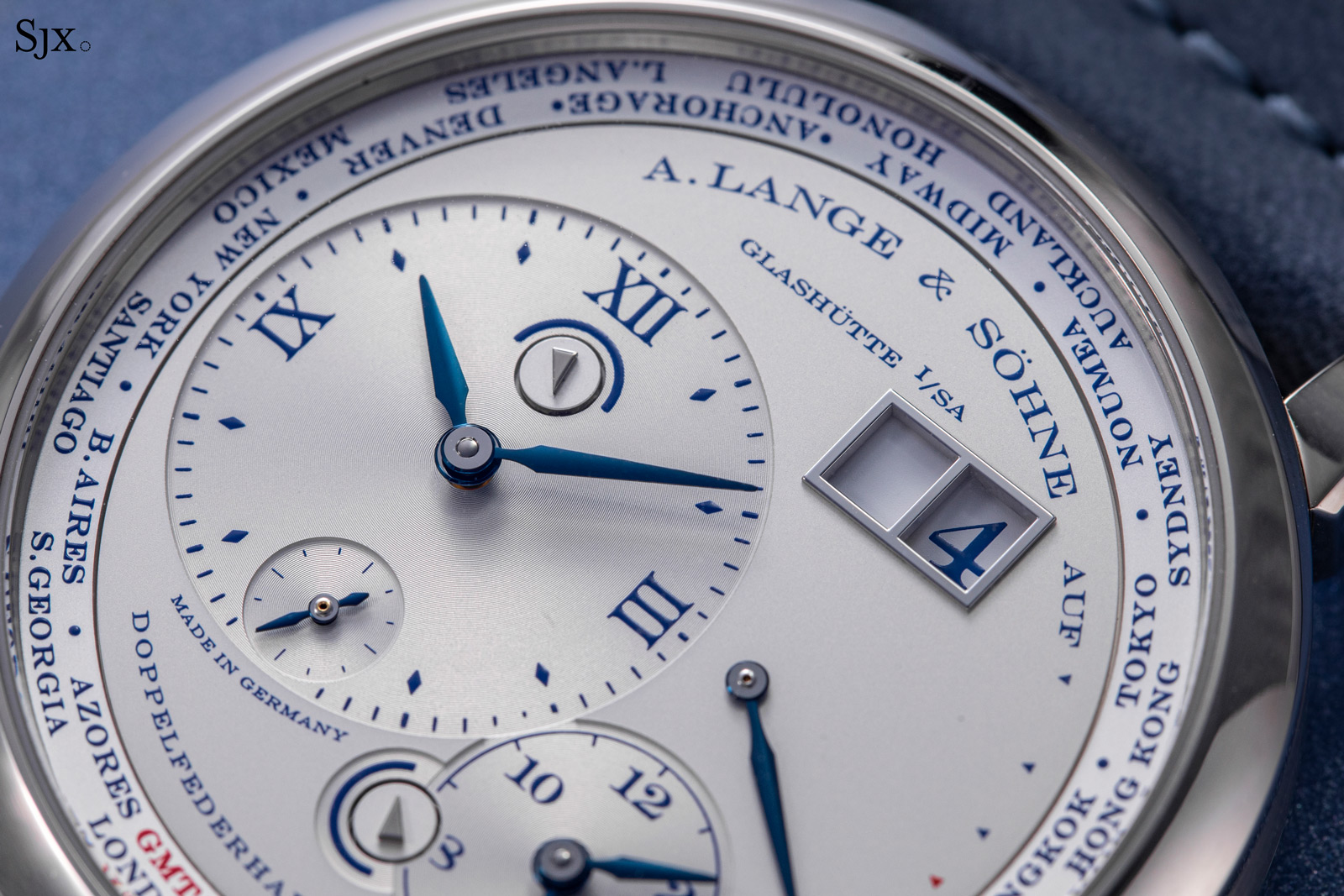
And as with the rest of the 25th anniversary editions, the blue theme continues on the back, with the twin movement cocks hand-engraved and filled with blue lacquer.
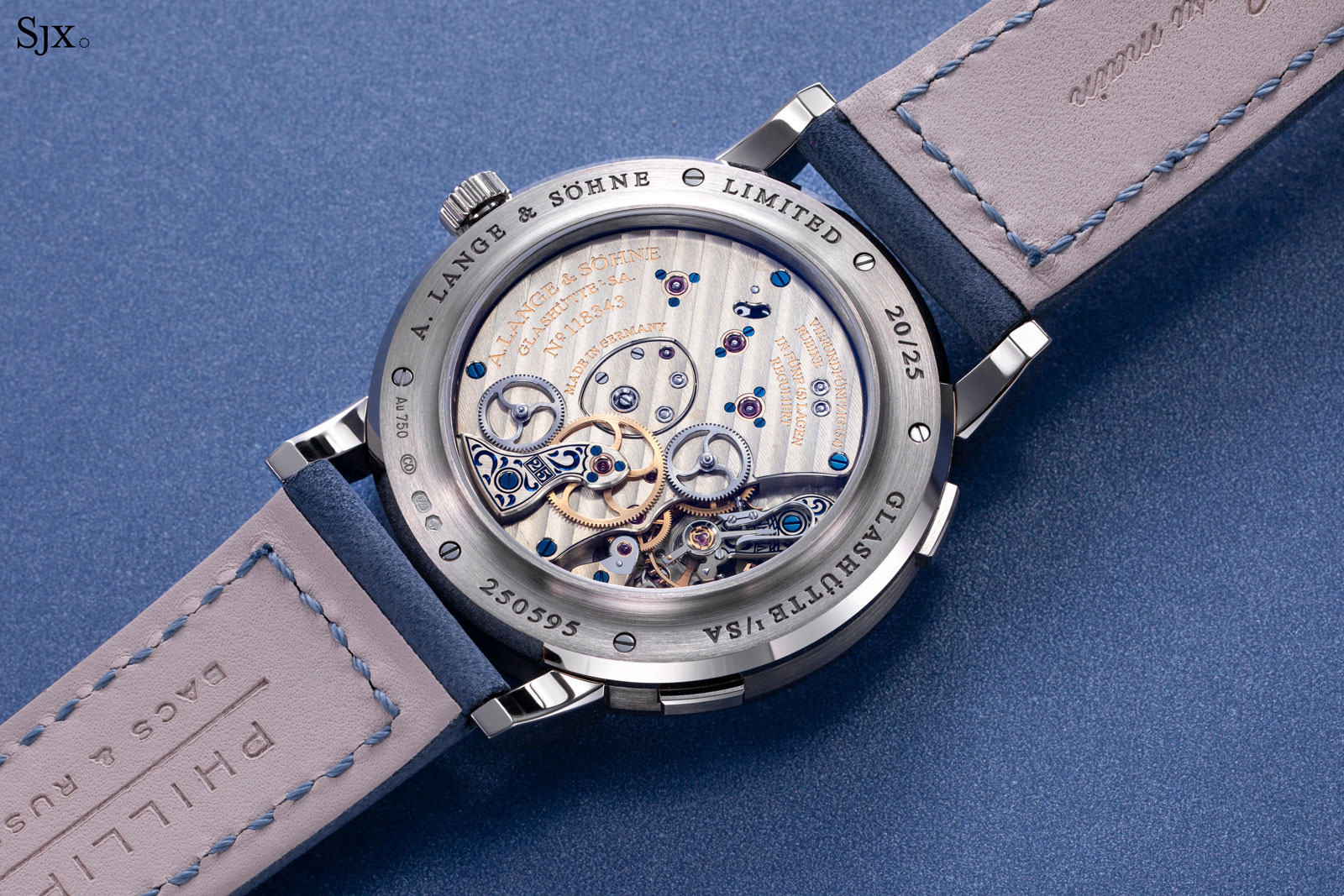
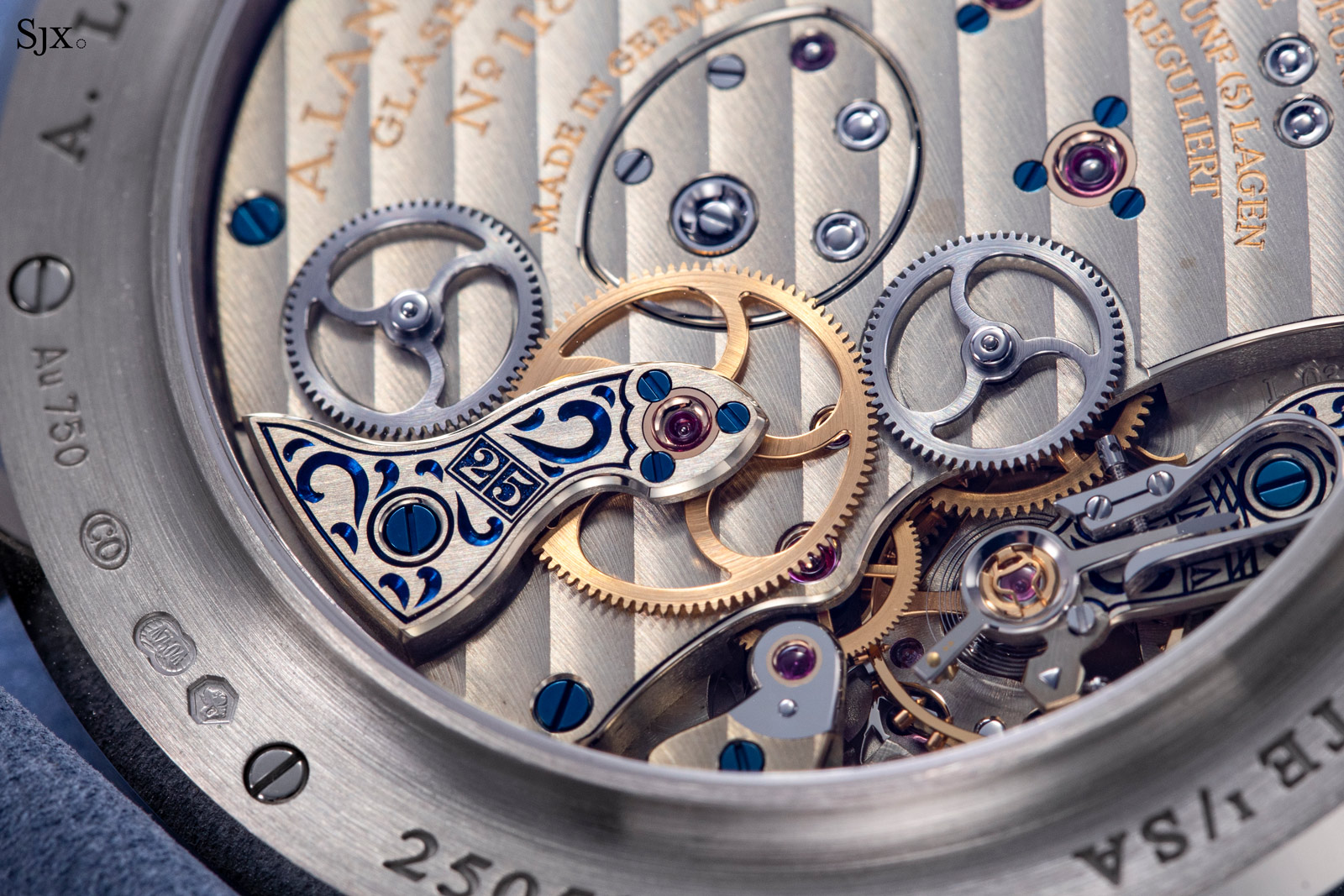
The cock for the secondary gear train of the second time zone is engraved with “25” in a frame, replicating the oversized date that’s a Lange trademark
Because the 25th anniversary edition based on the first-generation Lange 1 Time Zone, the present example possesses the quirks of the first-generation model, including a slightly more cluttered dial with a separate day-and-night indicator. Even though it lacks the clarity and technical refinements found in the second-generation version, the original has its charms – it is slightly fiddly, quirky, and also the original.
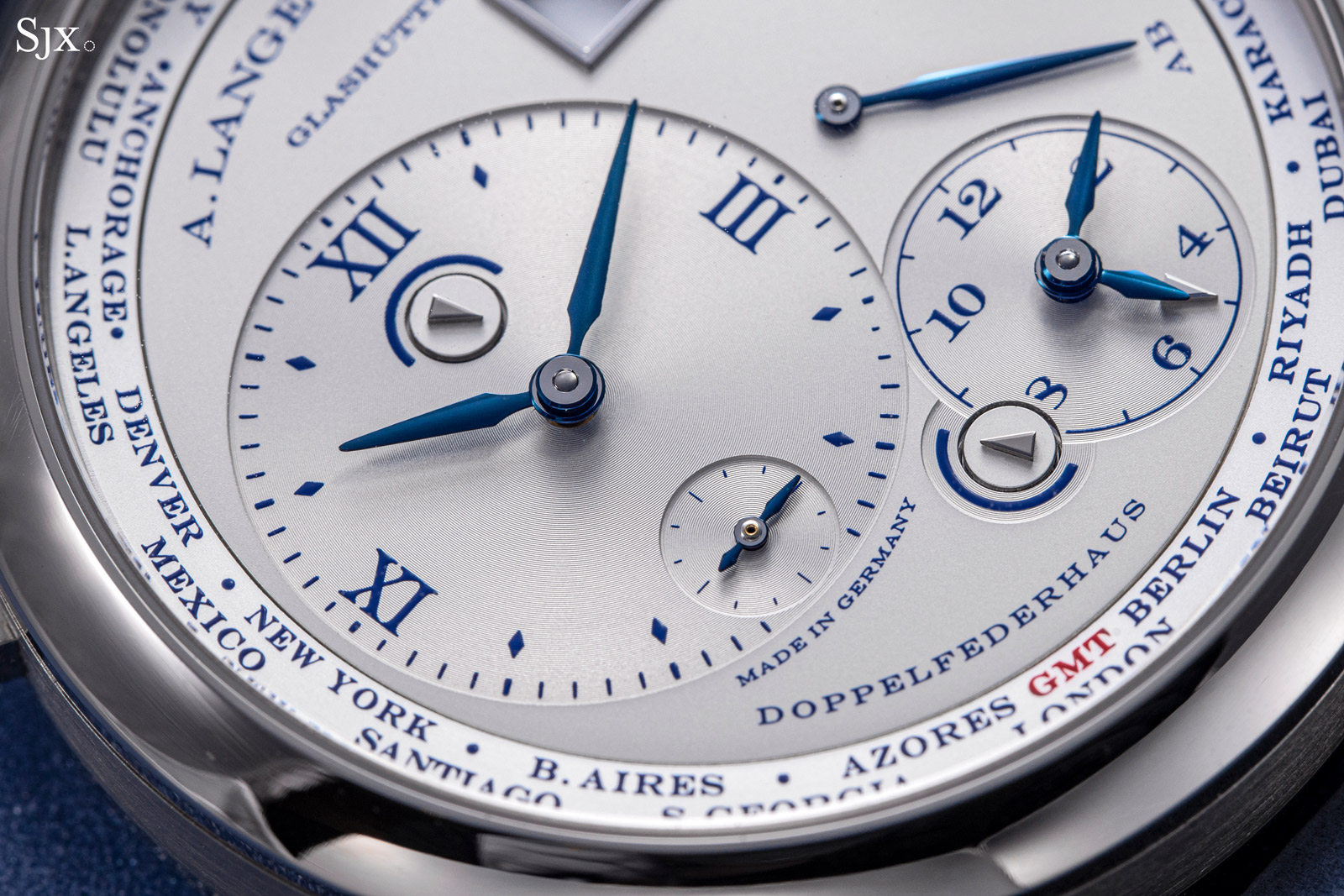
The Lange 1 Time Zone 25th Anniversary is accompanied by all its original goodies, and has an estimate of HK$200,000-390,000, or about US$25,600-50,000. Full lot details here.
Preview and Auction
The preview exhibition is open daily from November 23-25 at the JW Marriott Hotel Hong Kong. The auction takes place over two days at the same location:
November 25 at 6:00 pm
November 26 at 12:00 pm and 4:30 pm
JW Marriott Hotel Hong Kong
88 Queensway
Admiralty
Hong Kong, China
For the full catalogue, as well as registration and online bidding, visit Phillips.com.
This was brought to you in partnership with Phillips.
Back to top.

